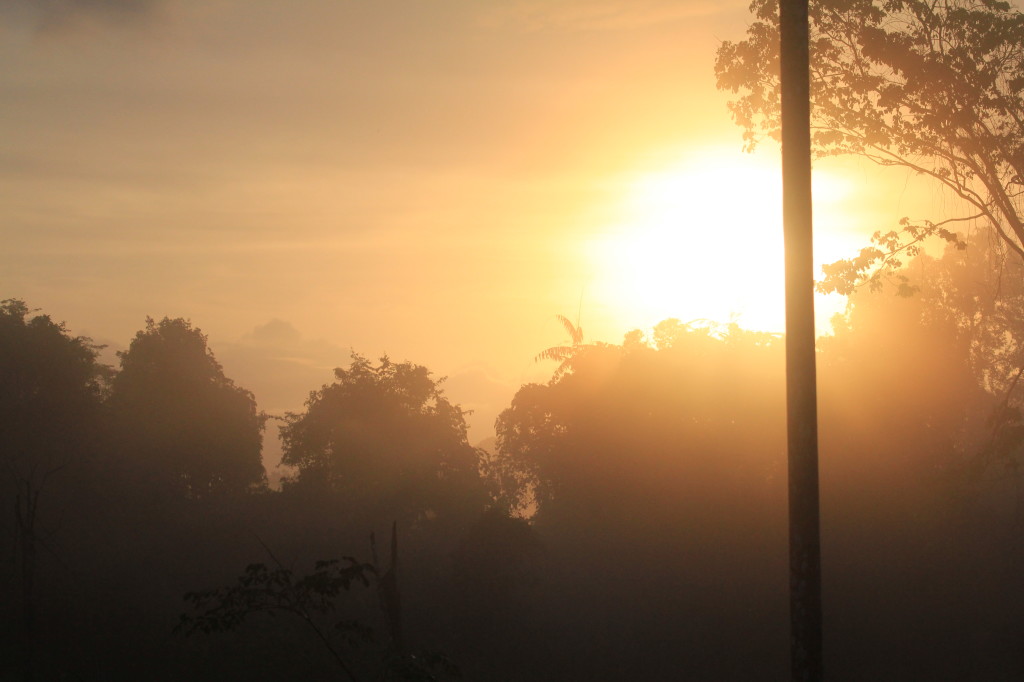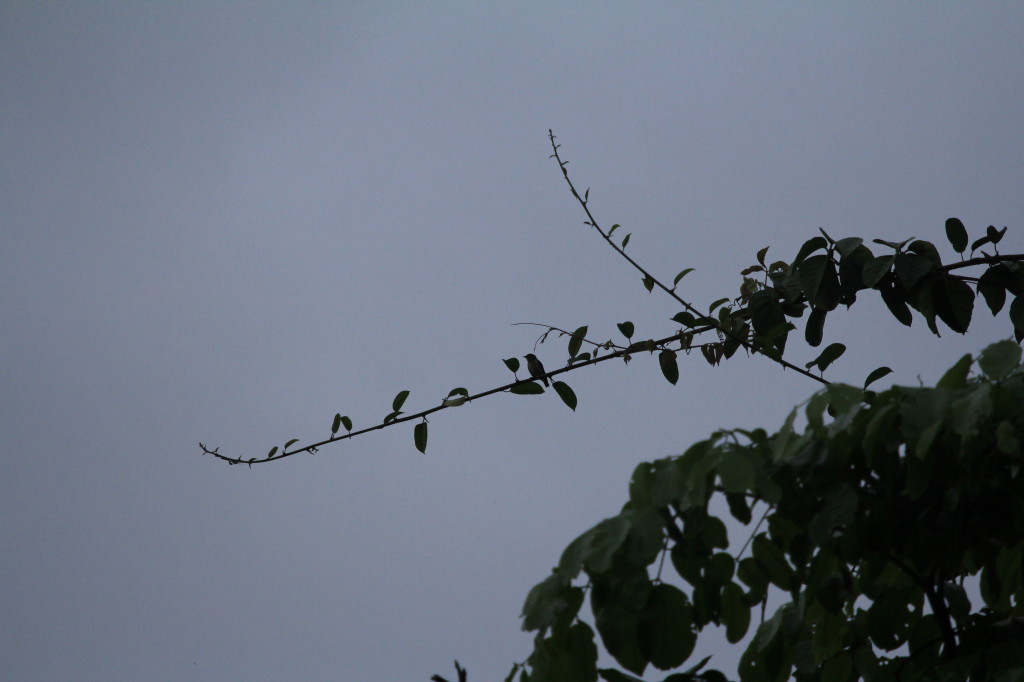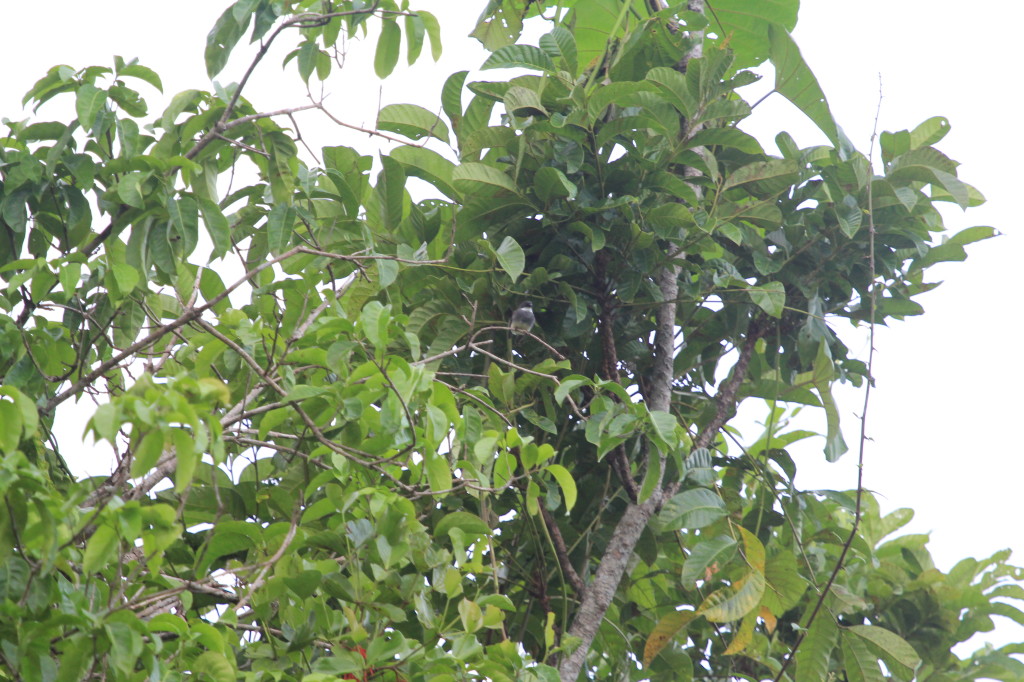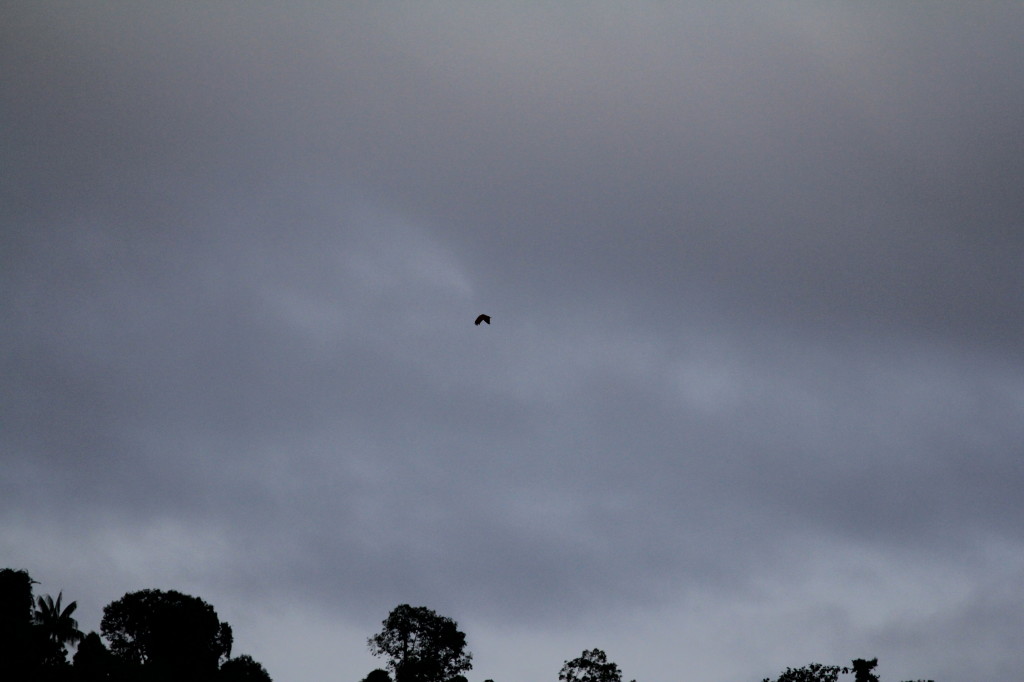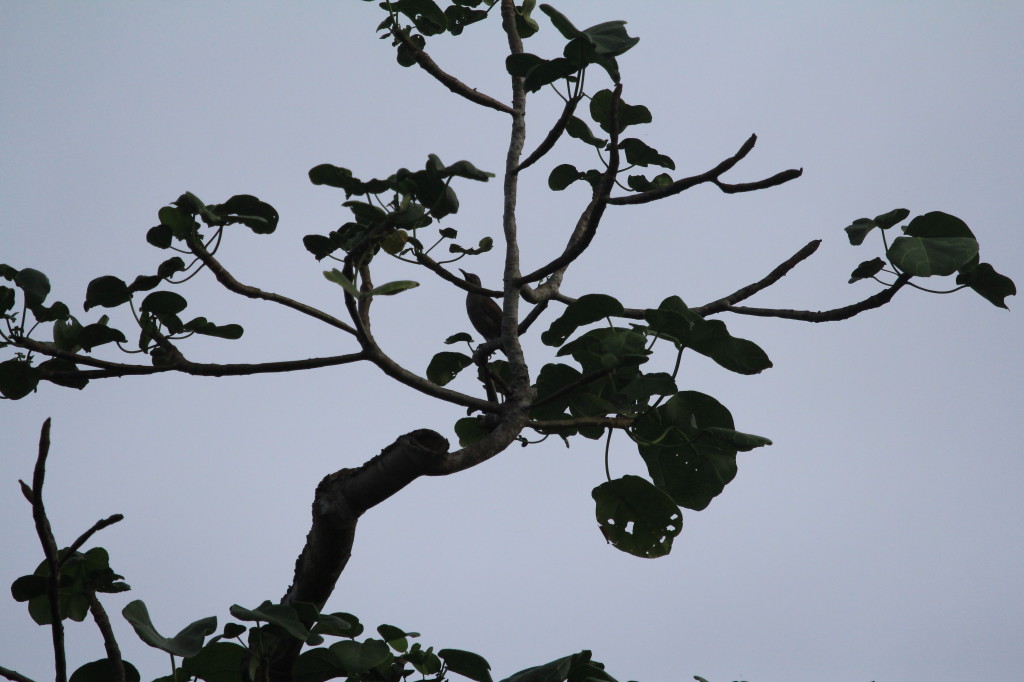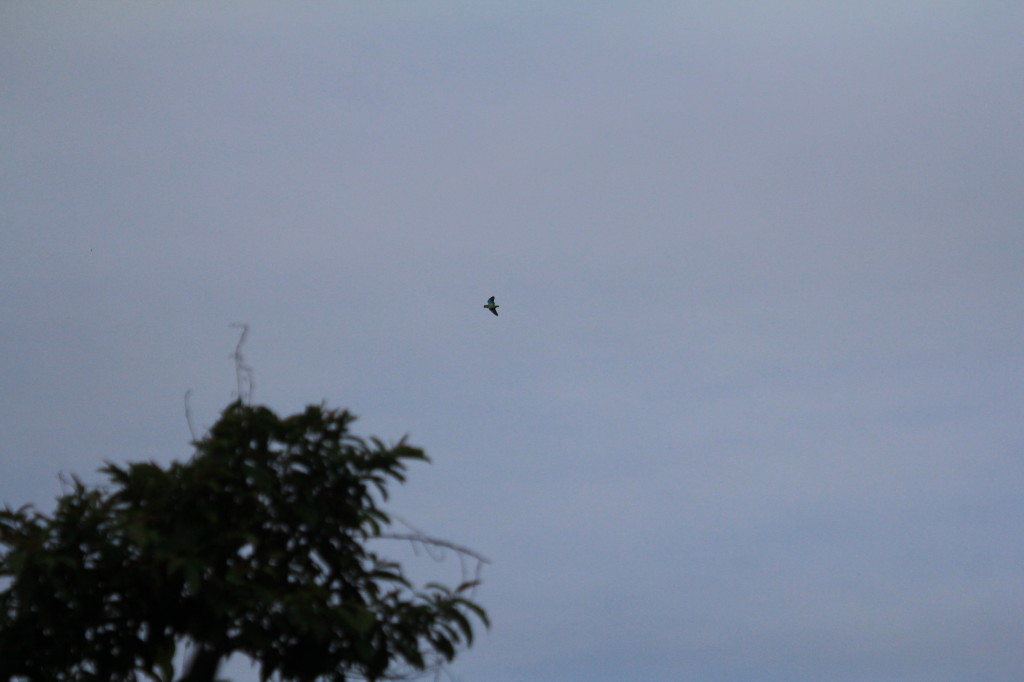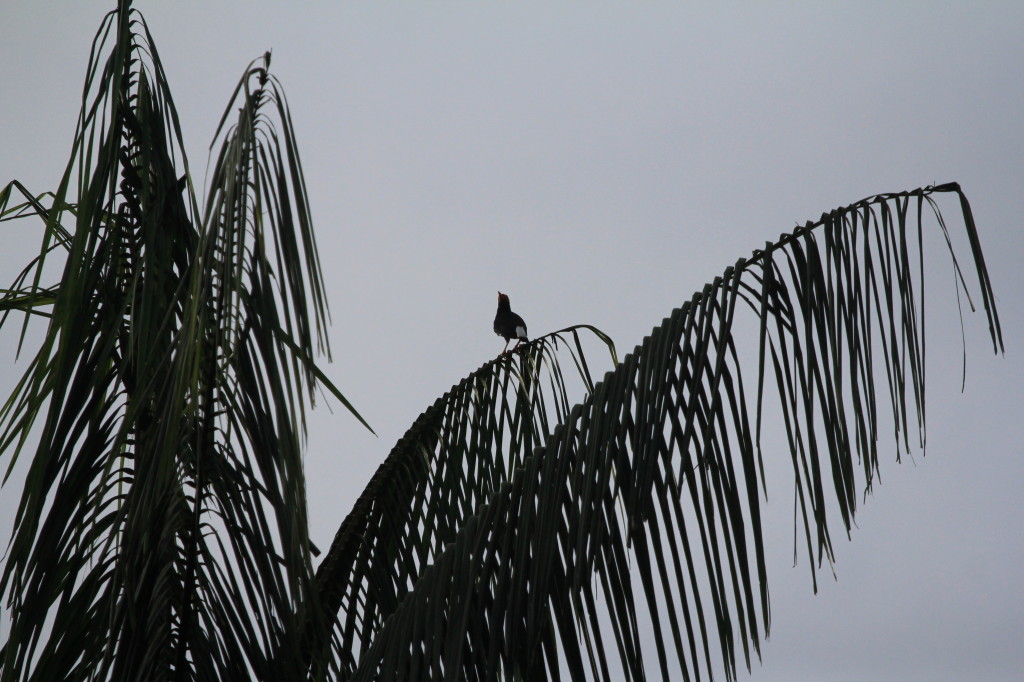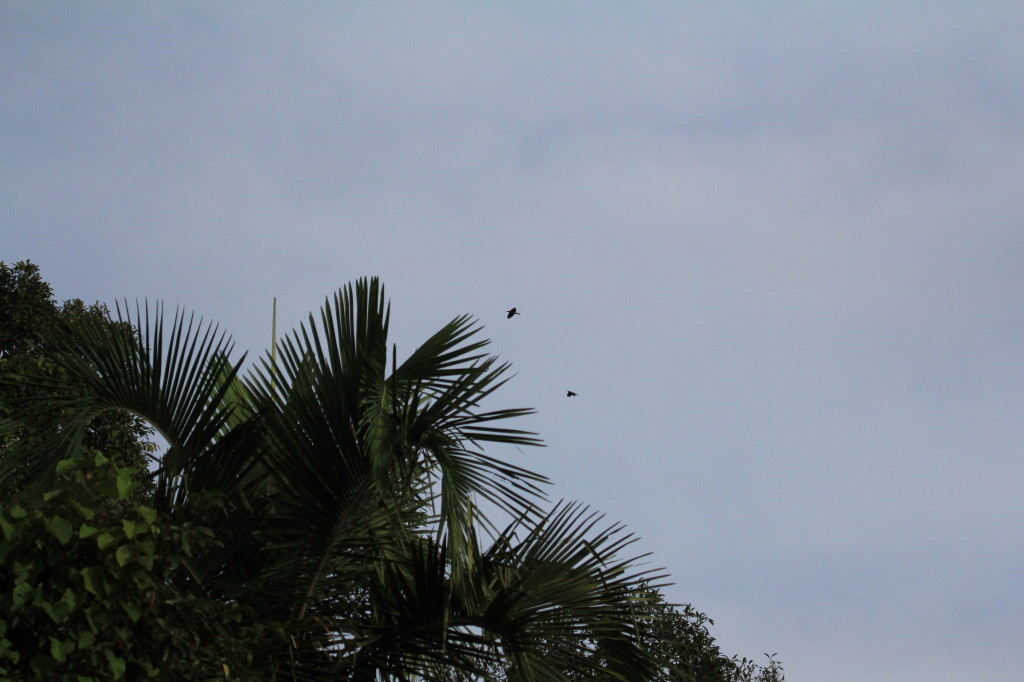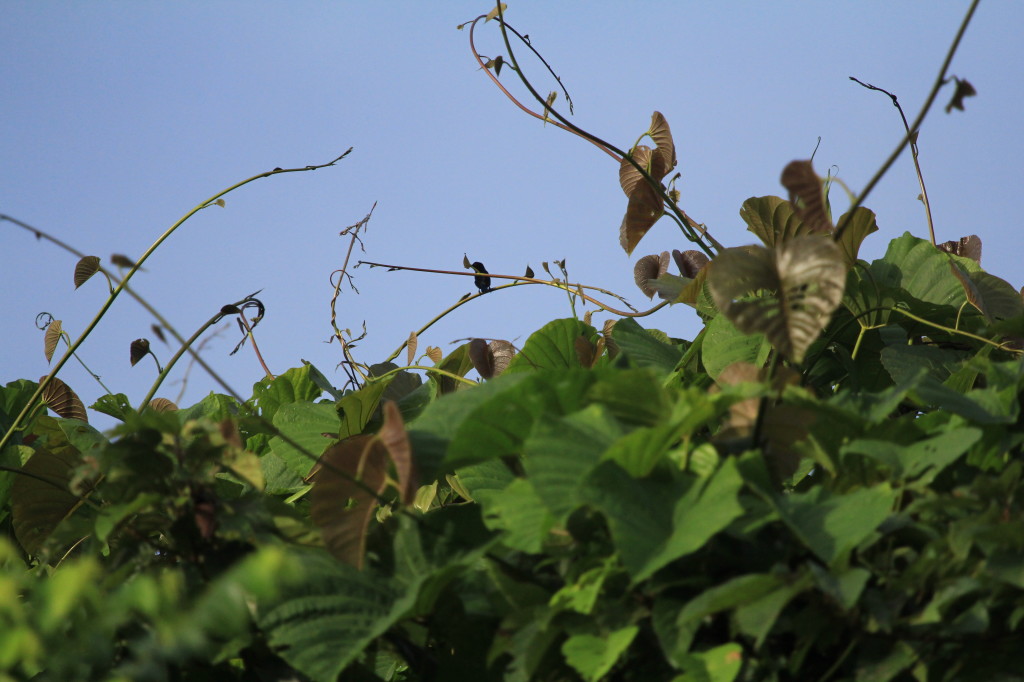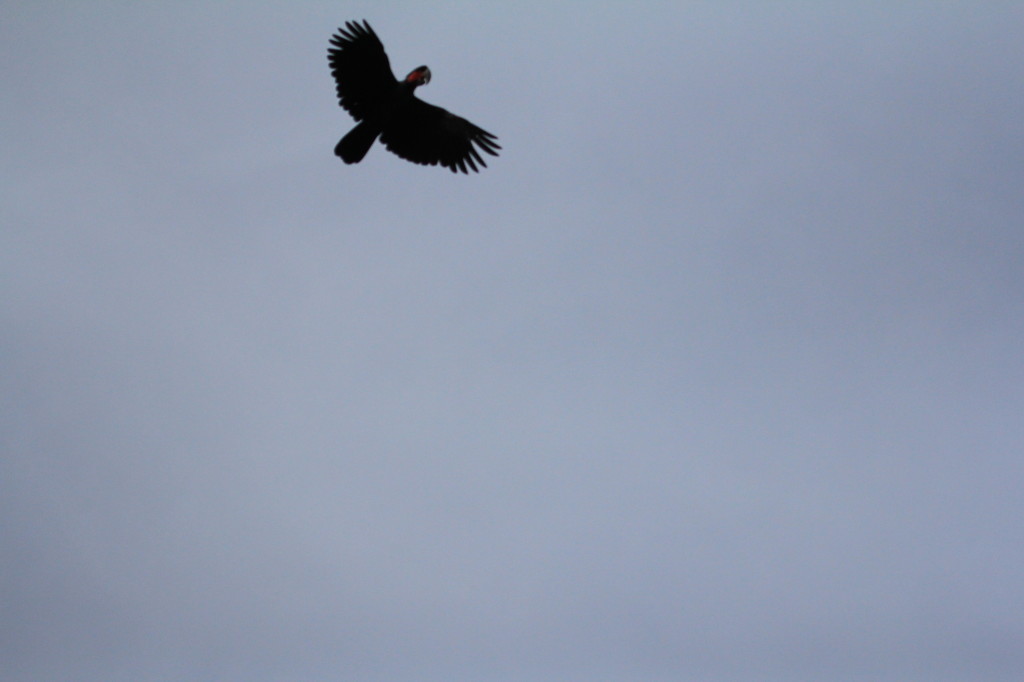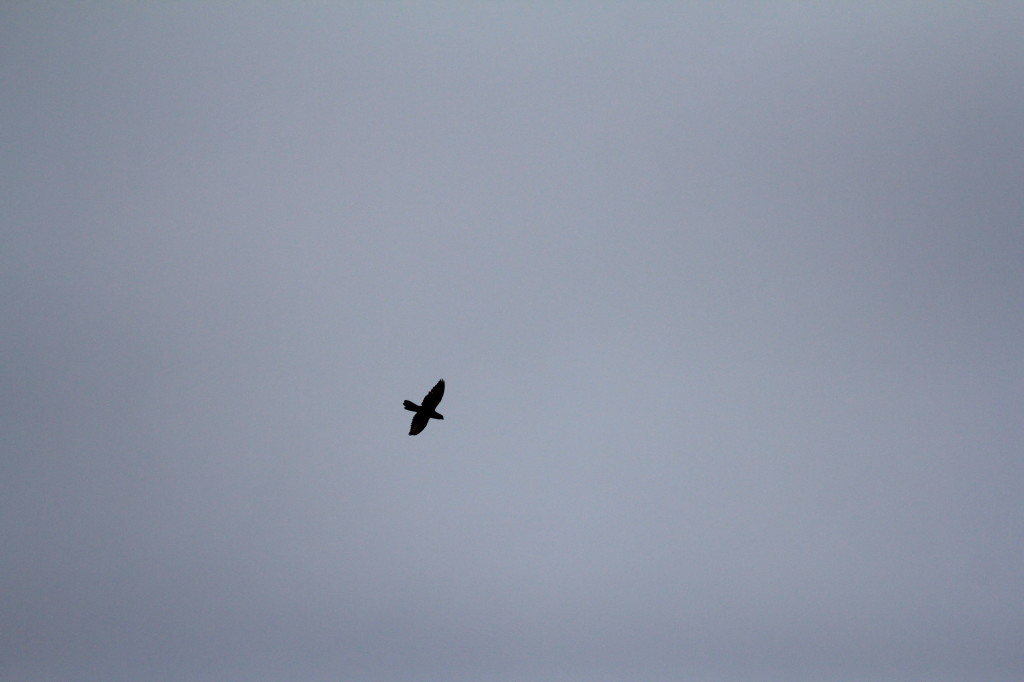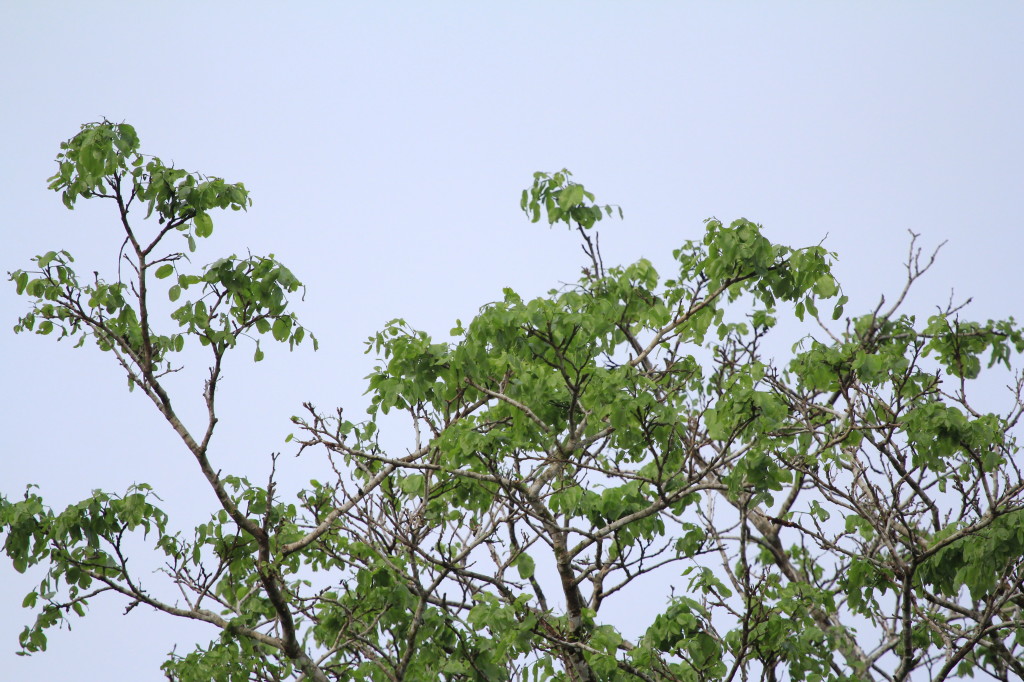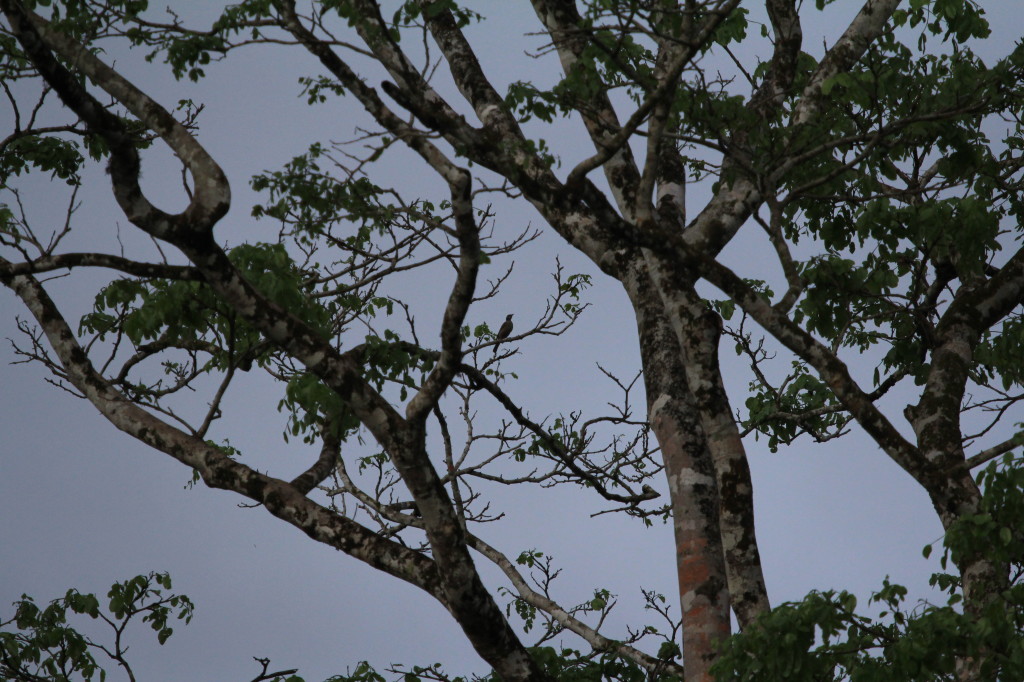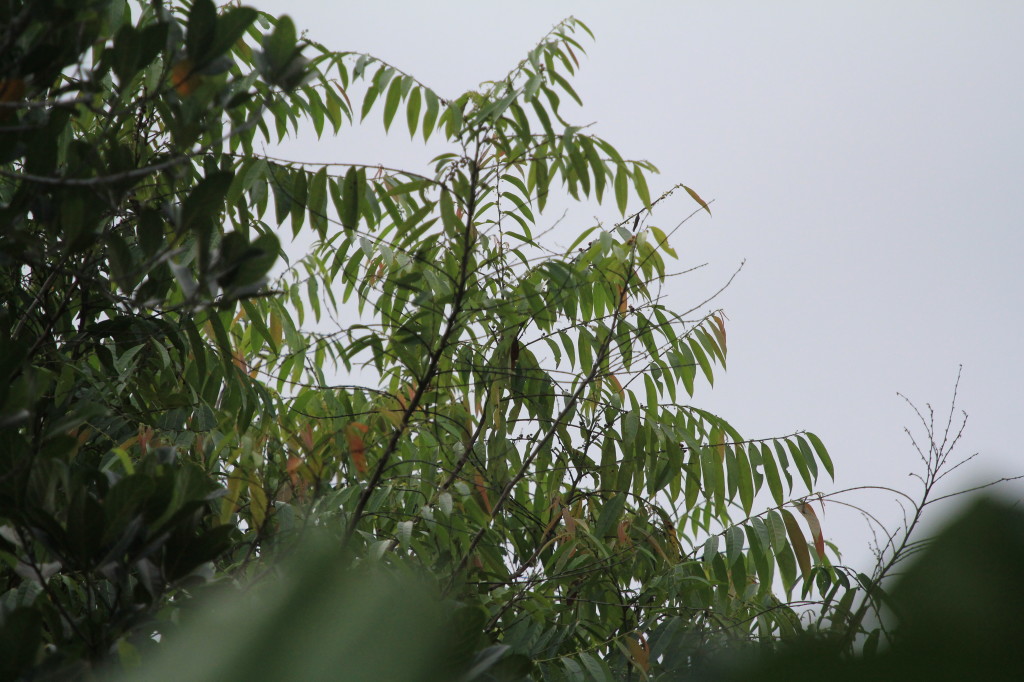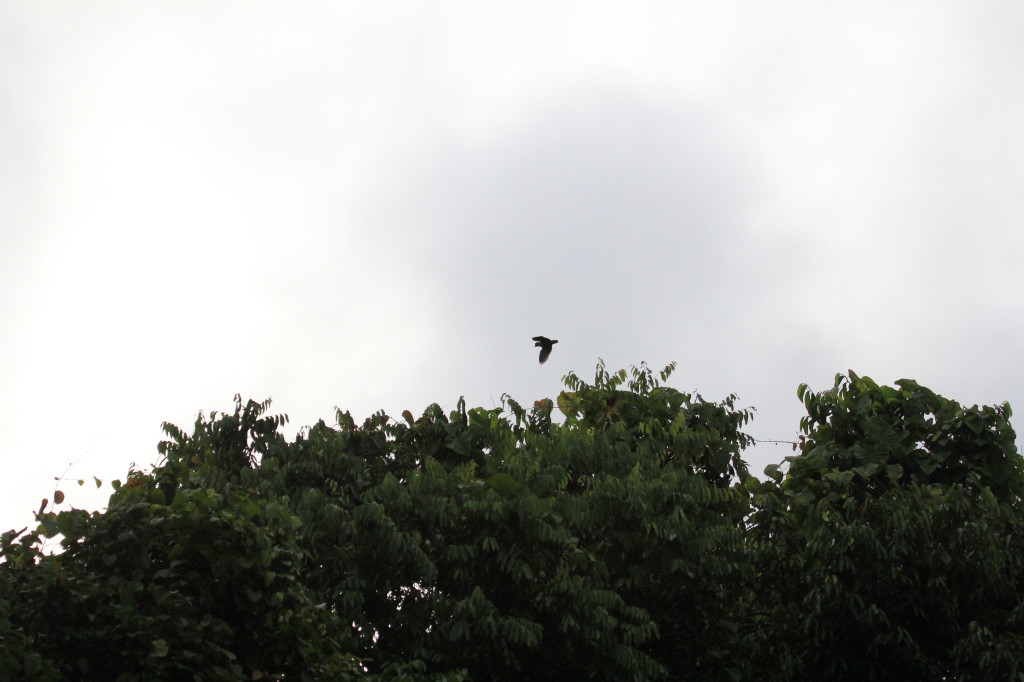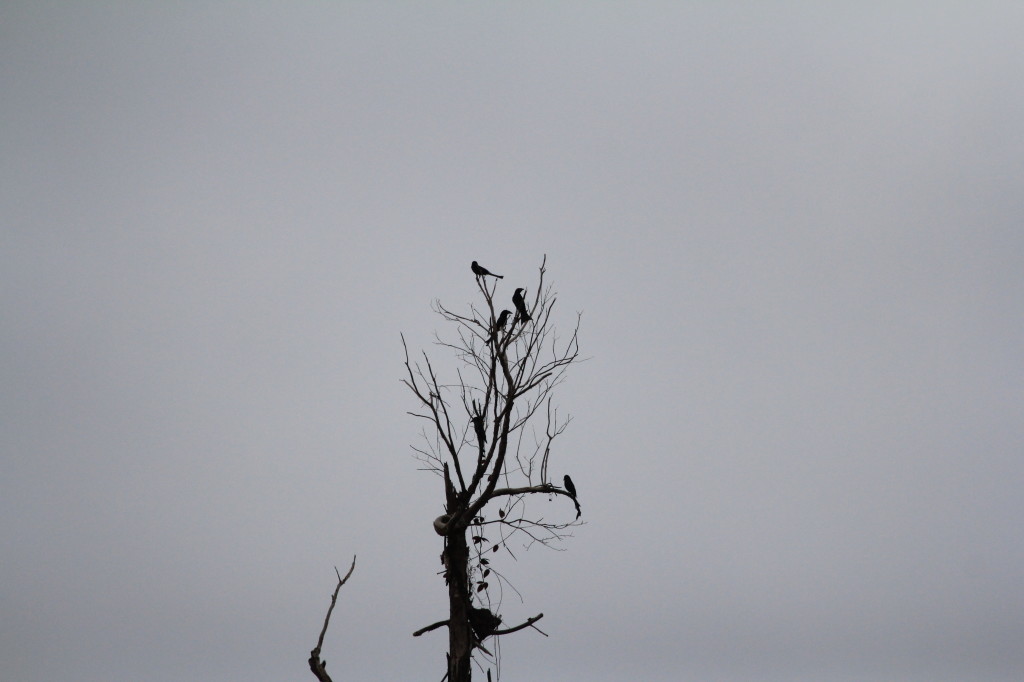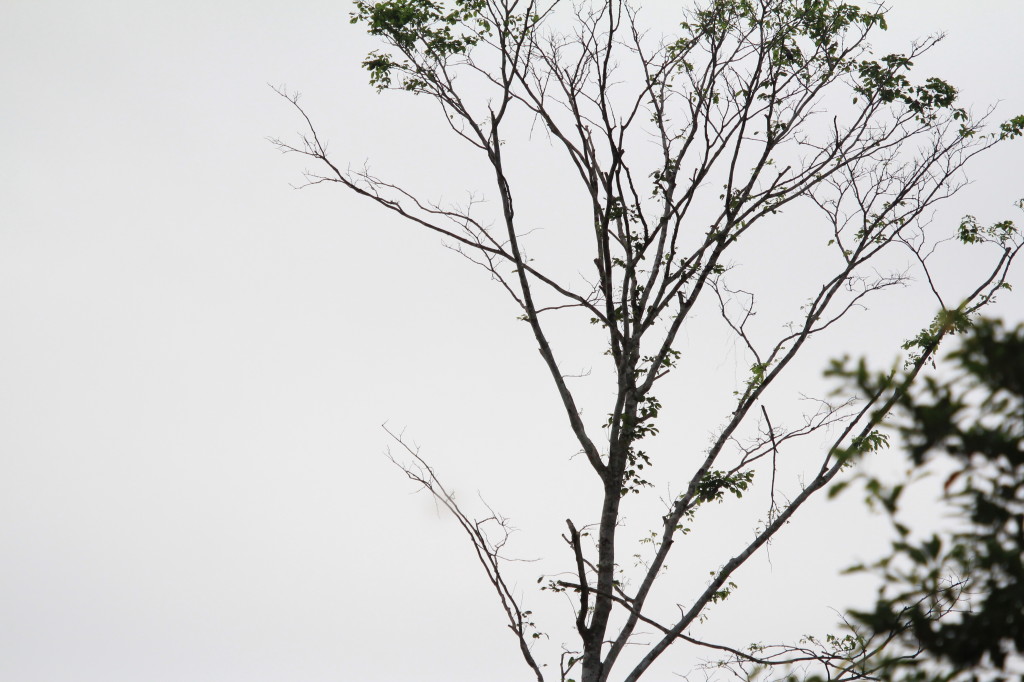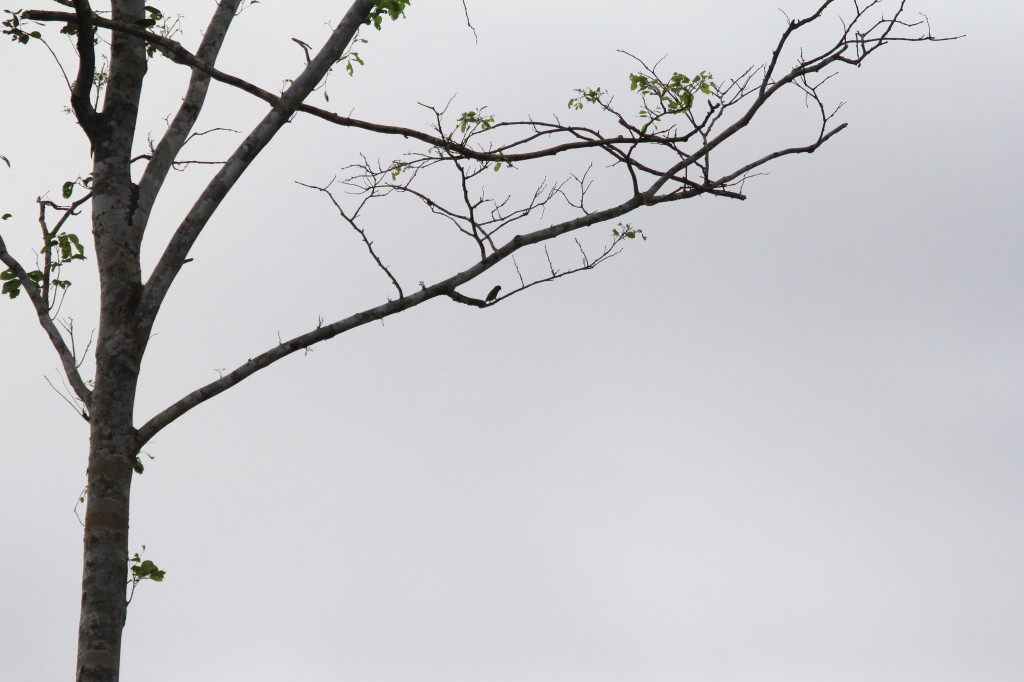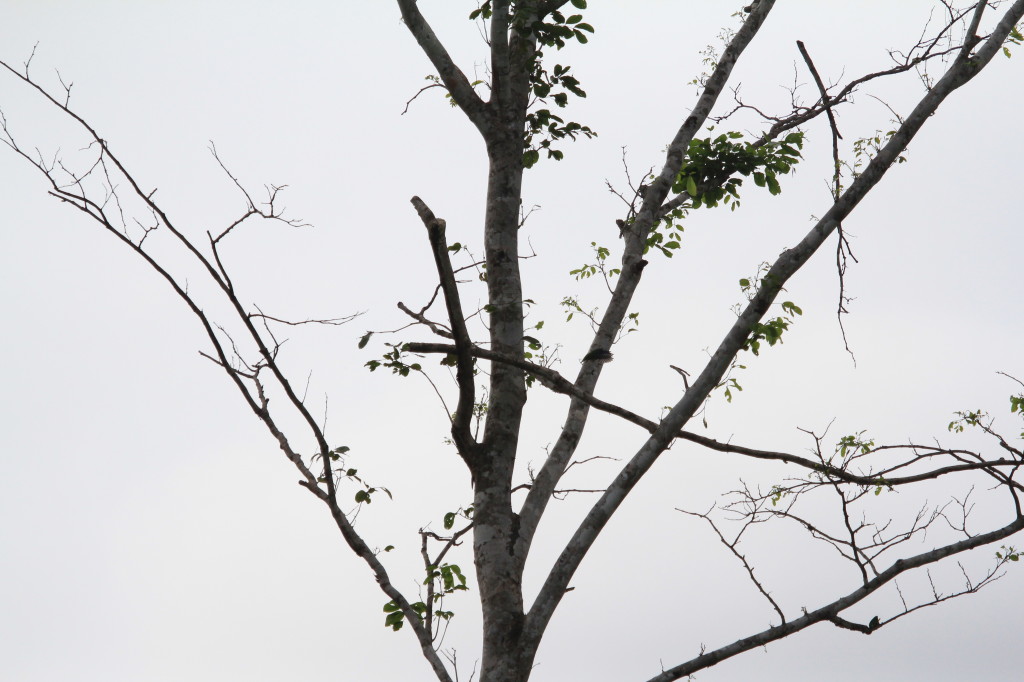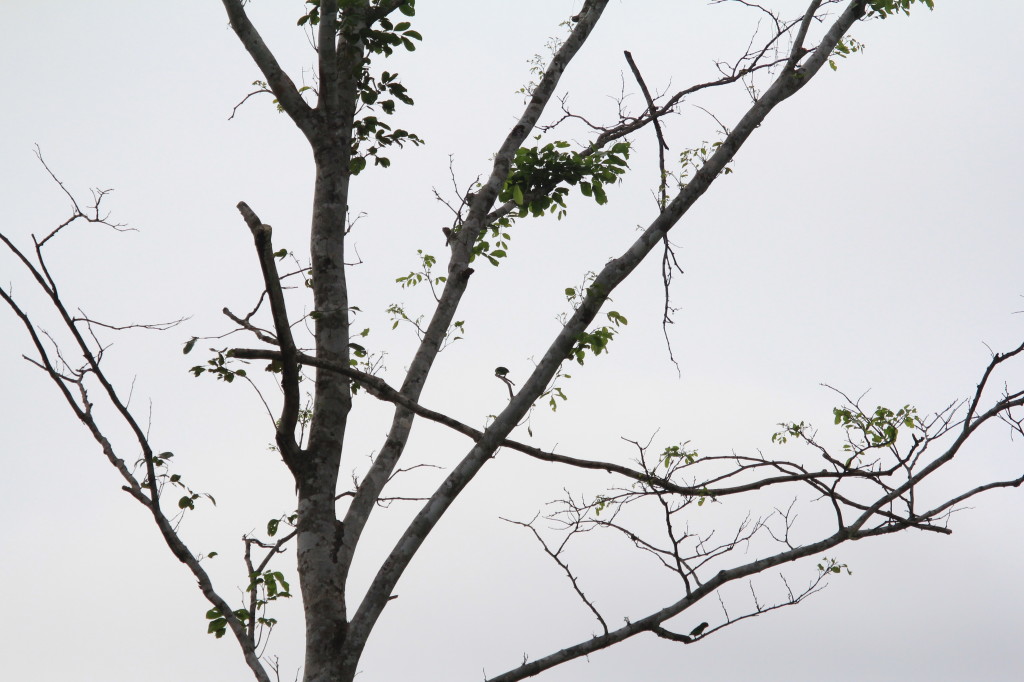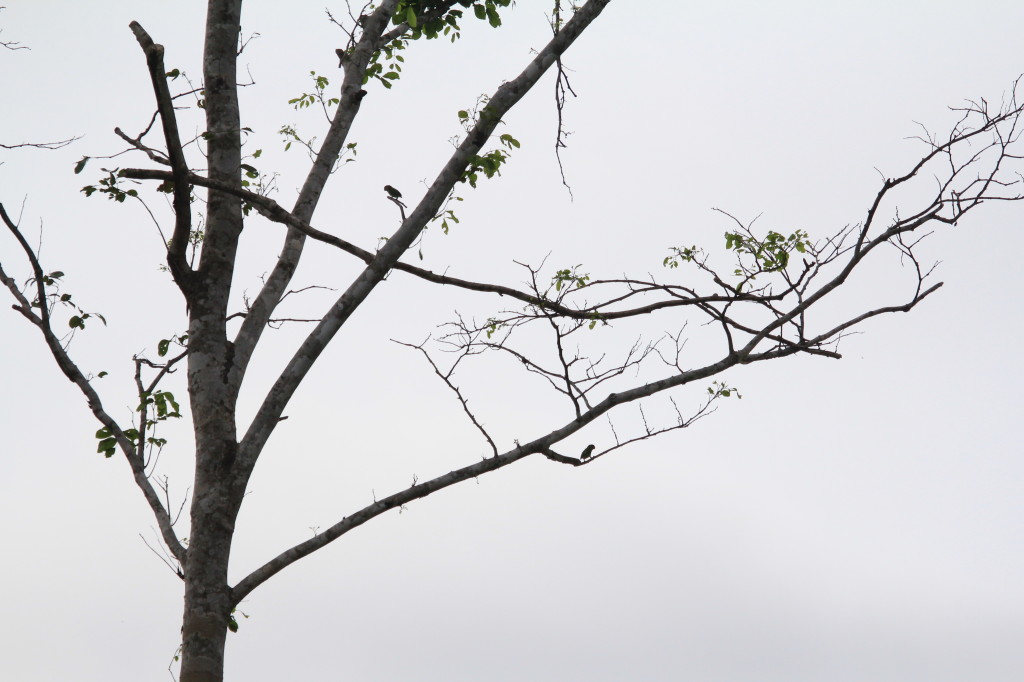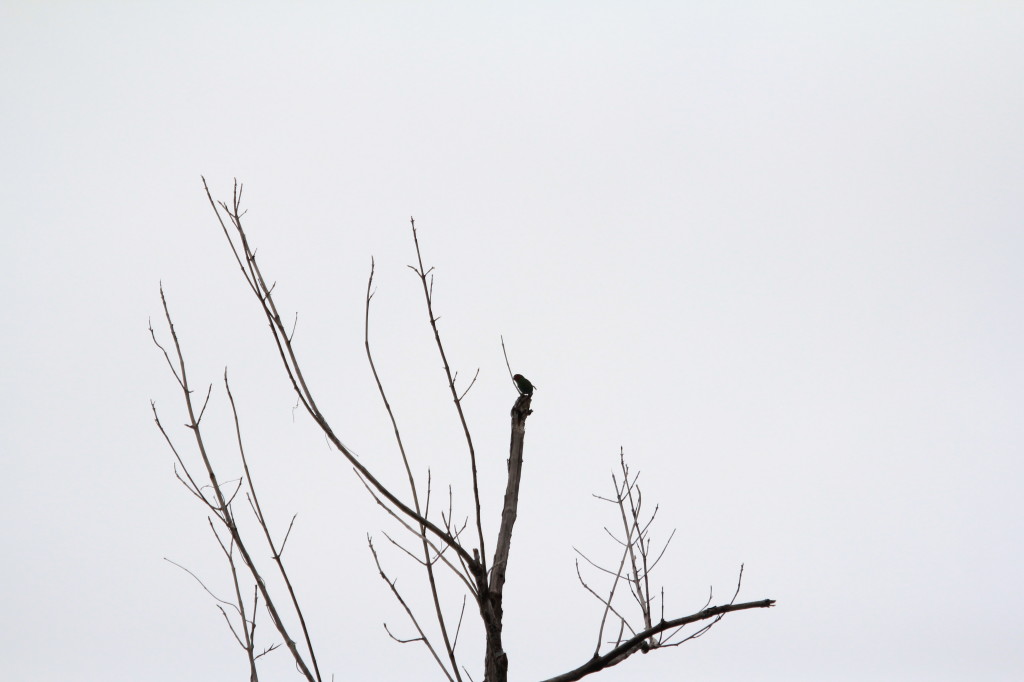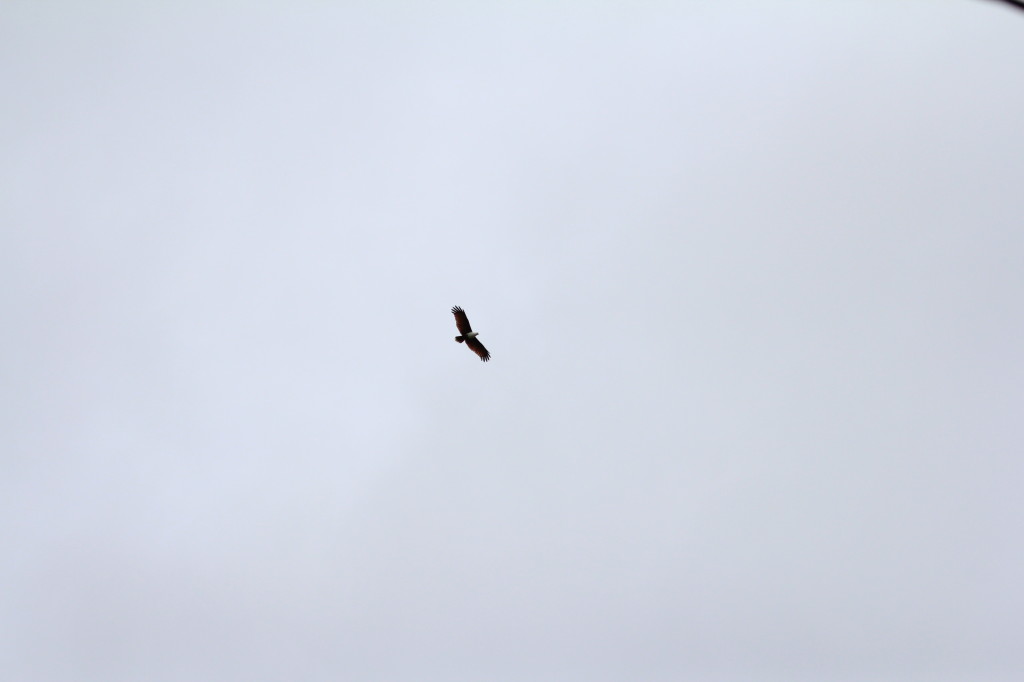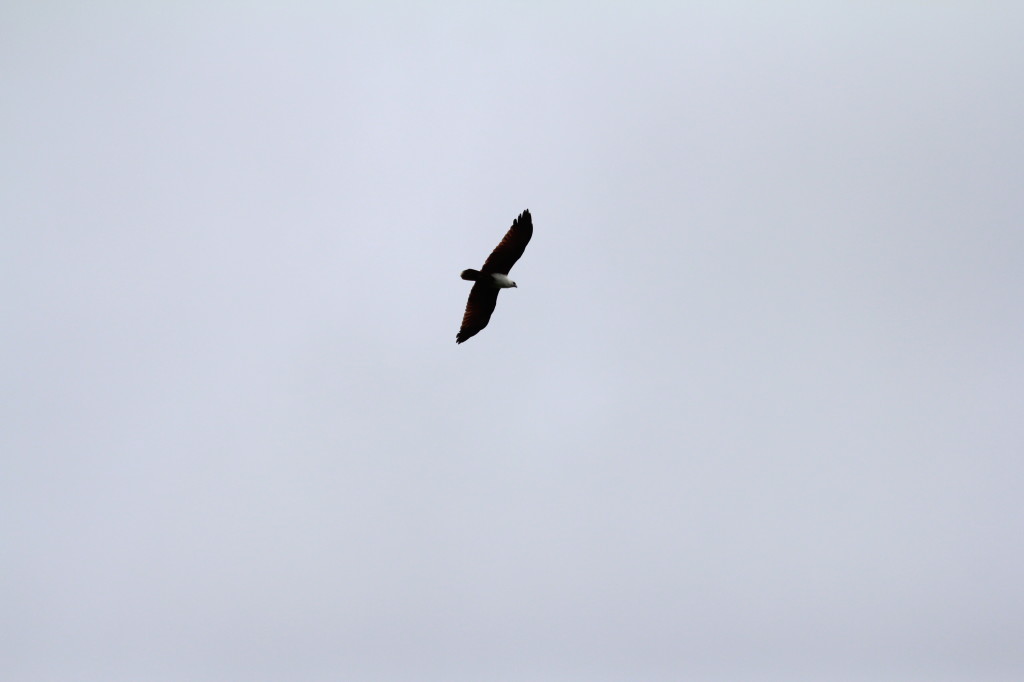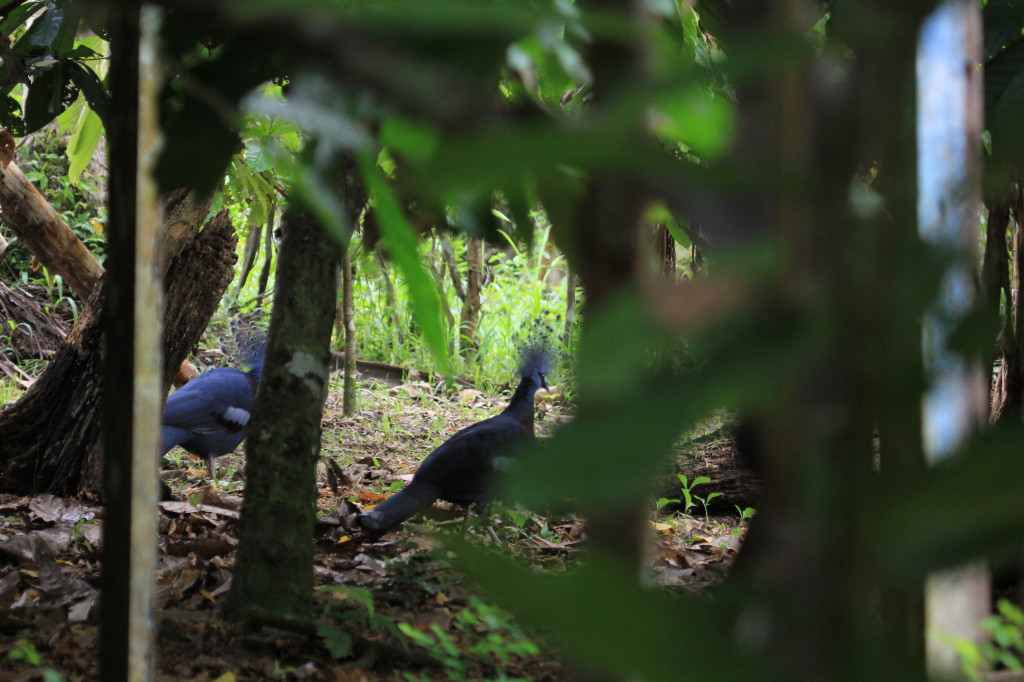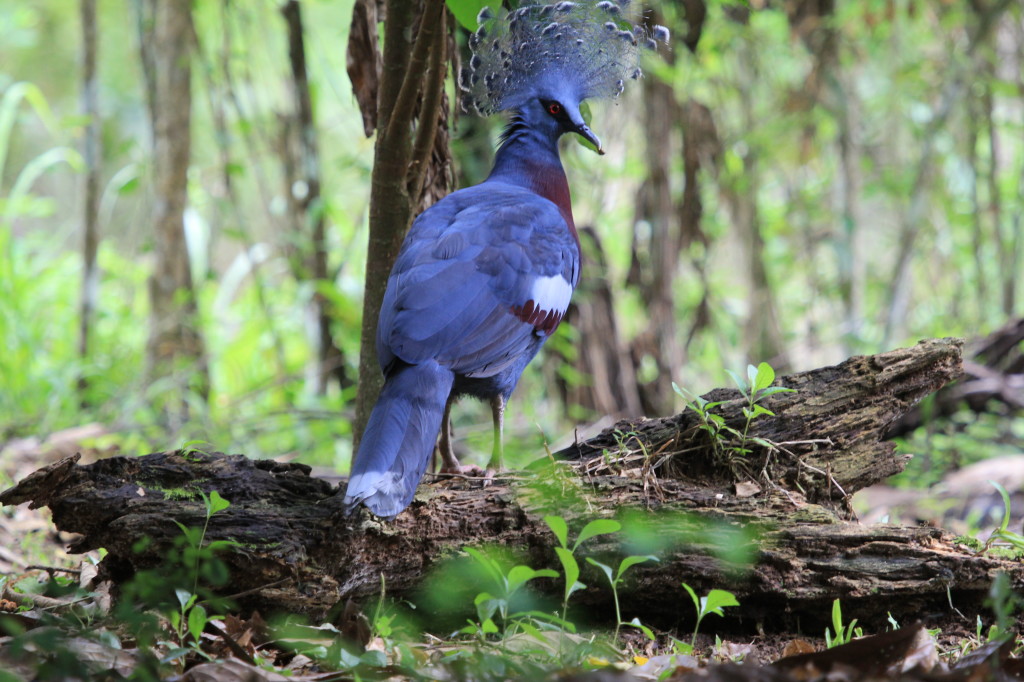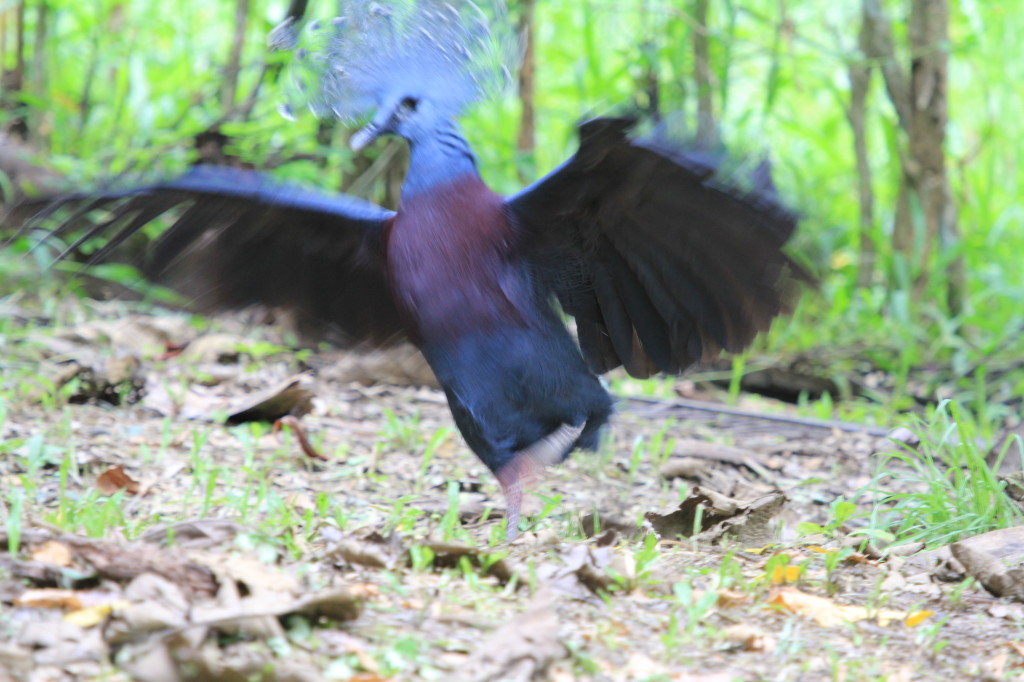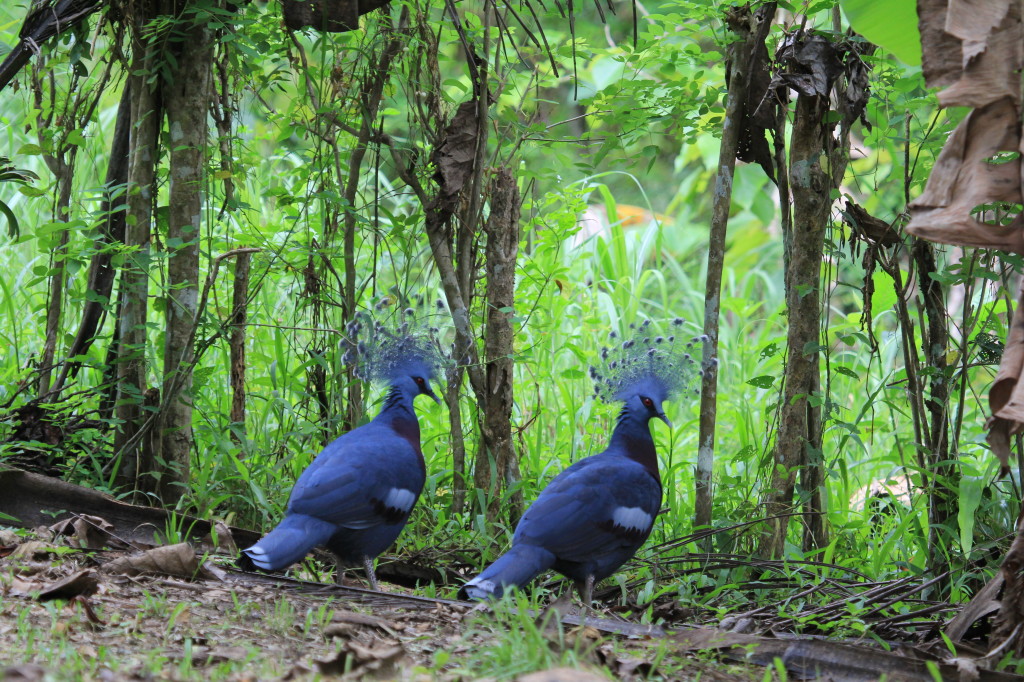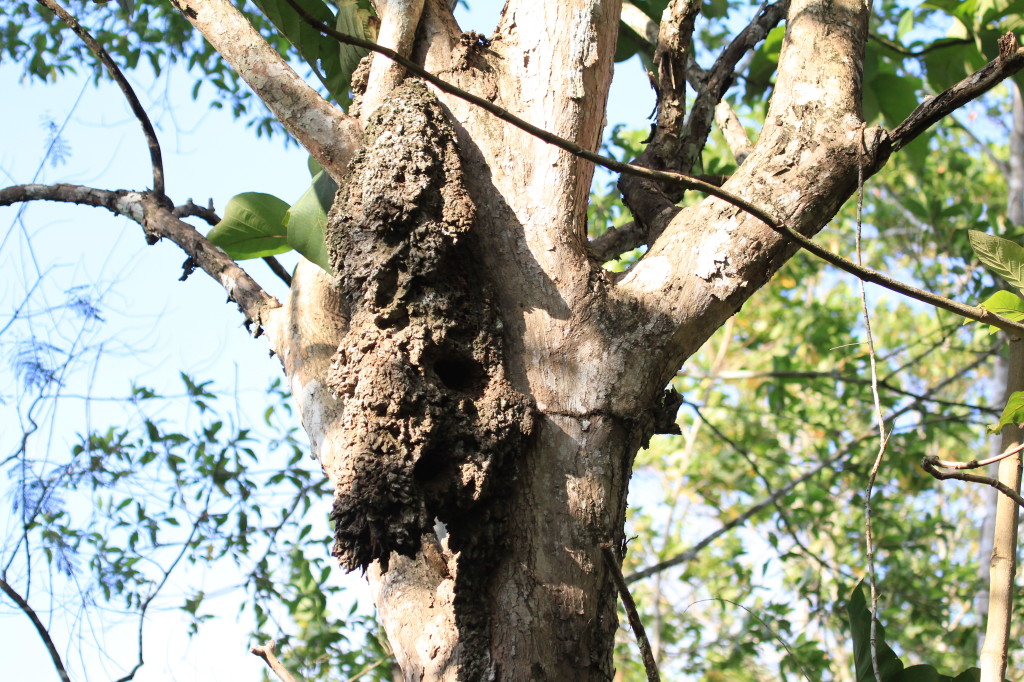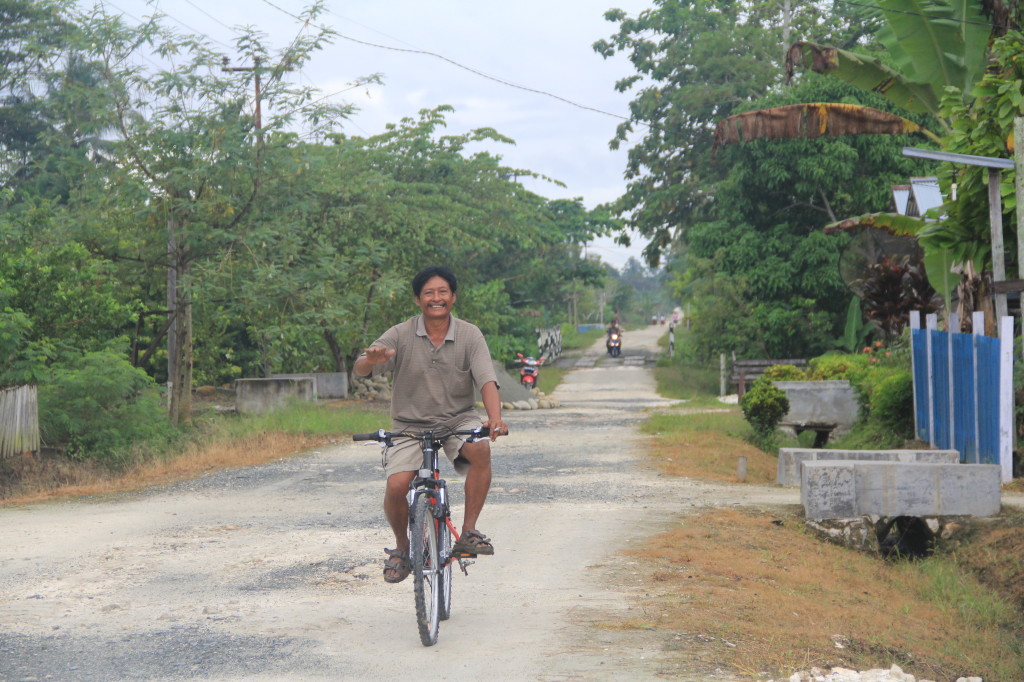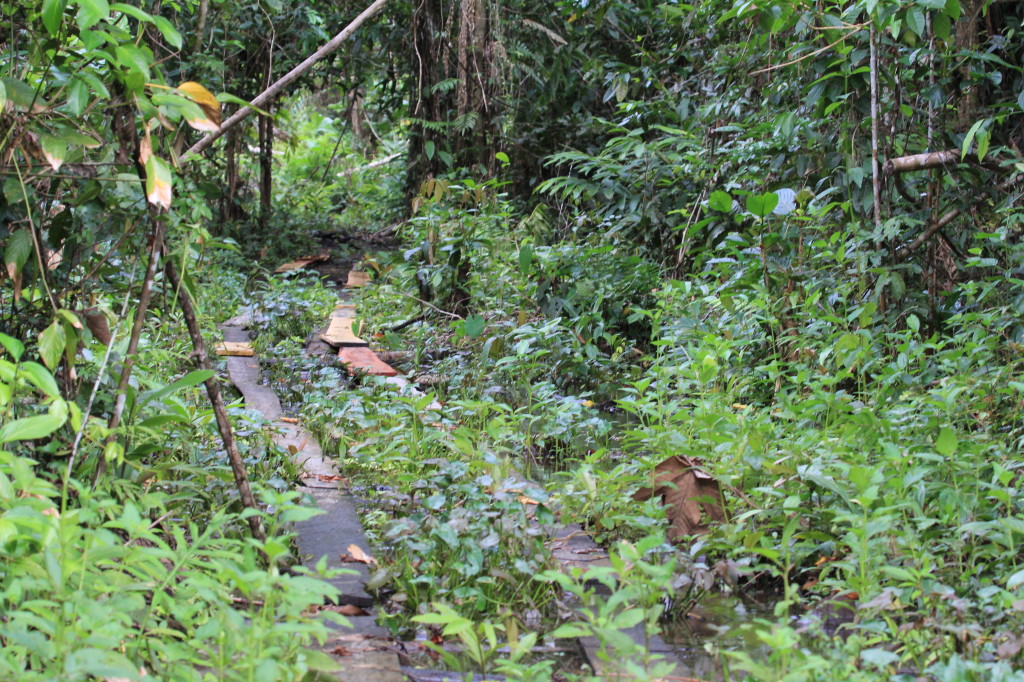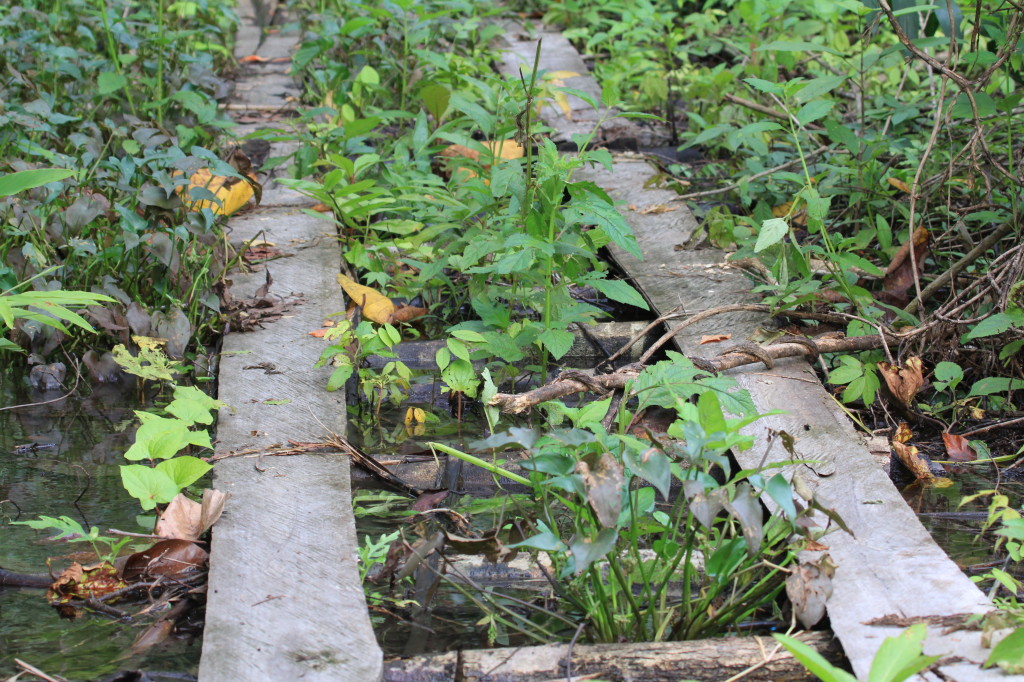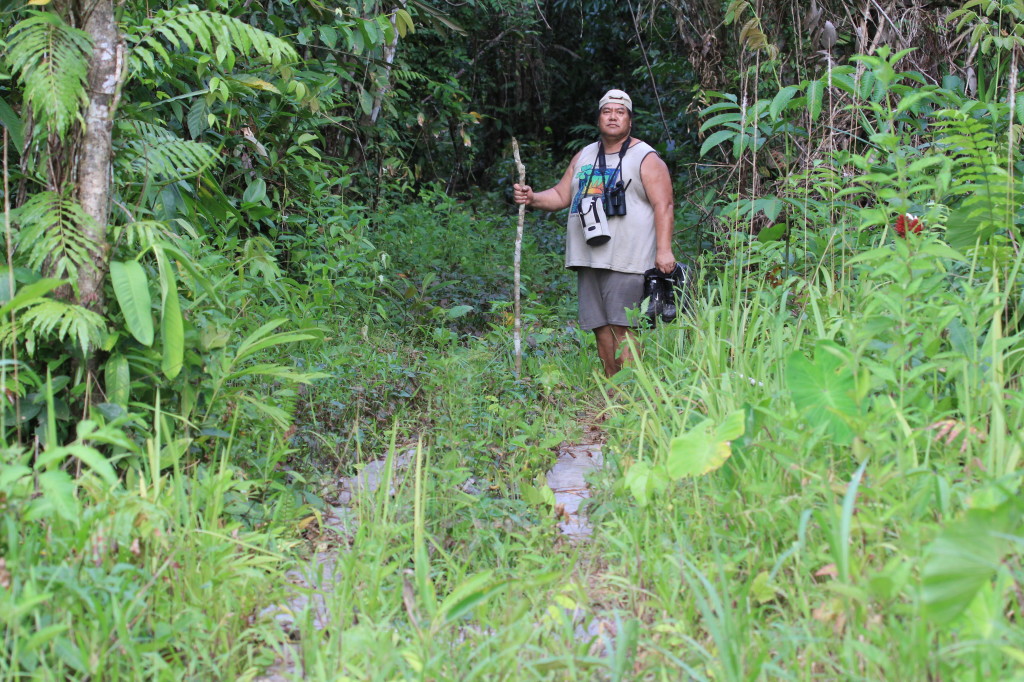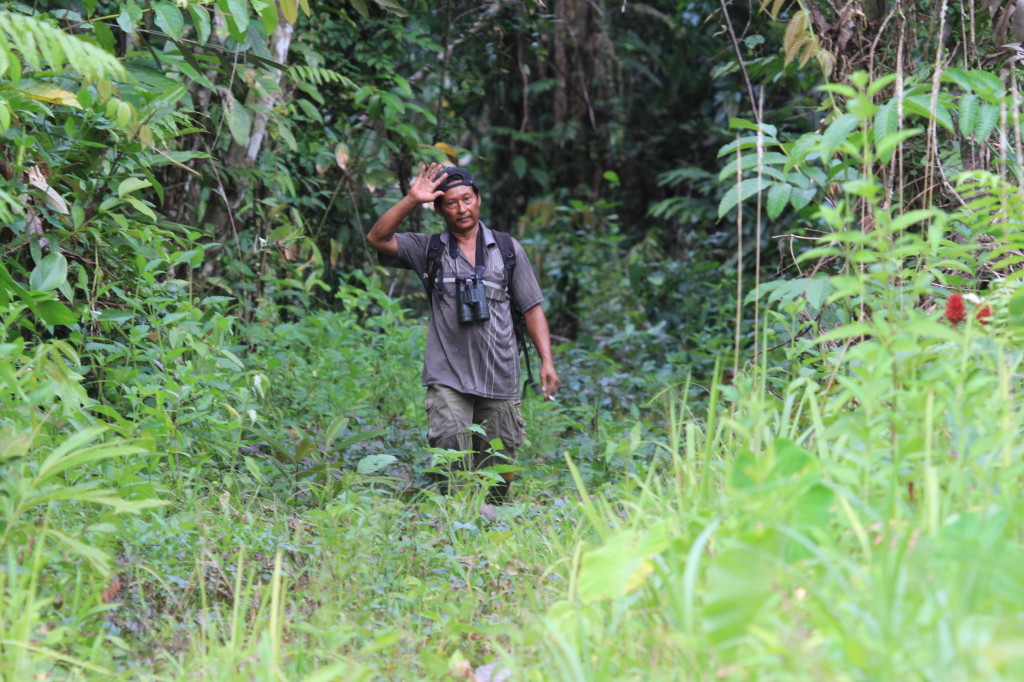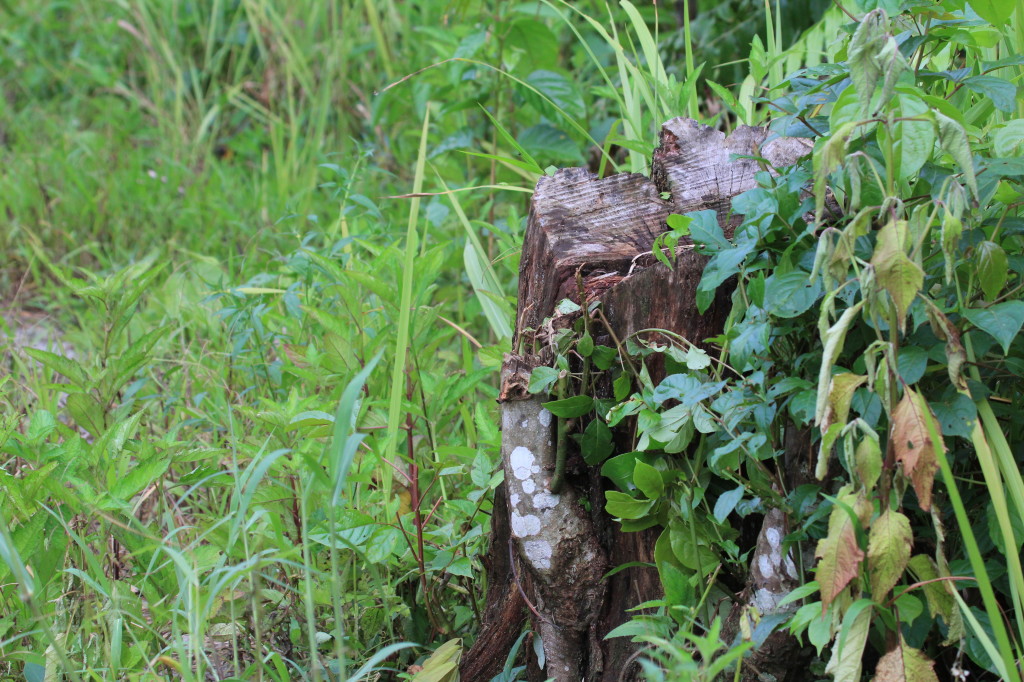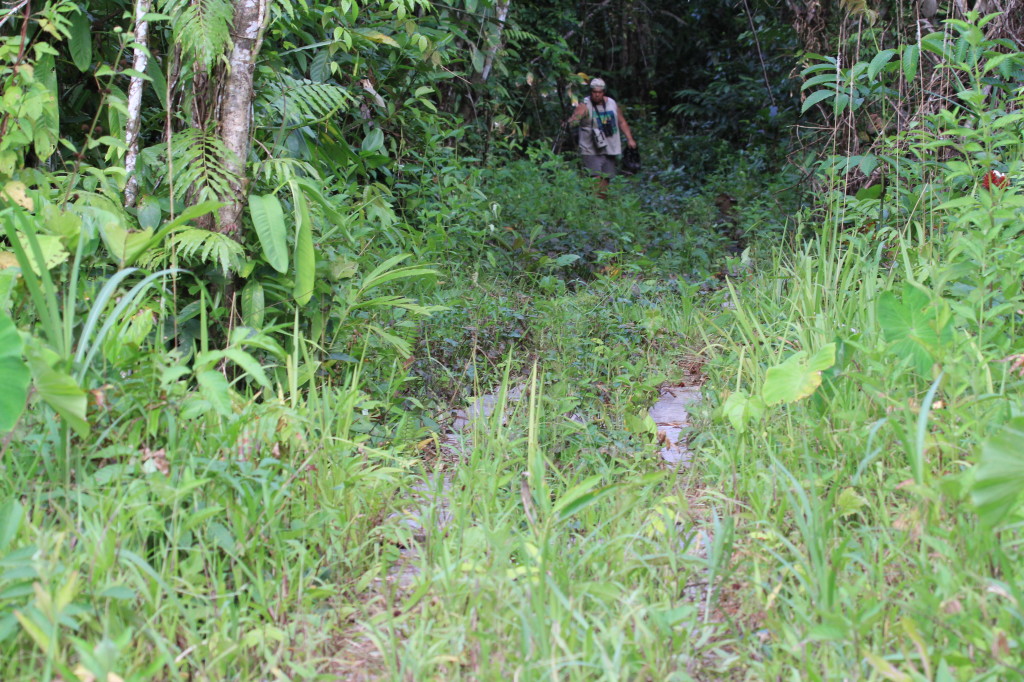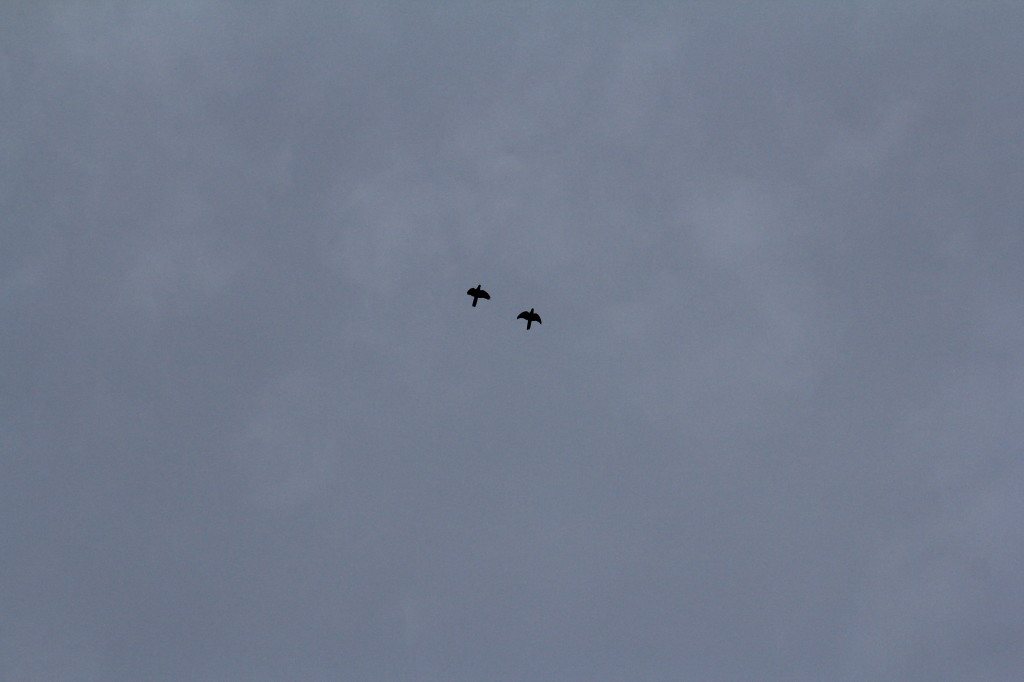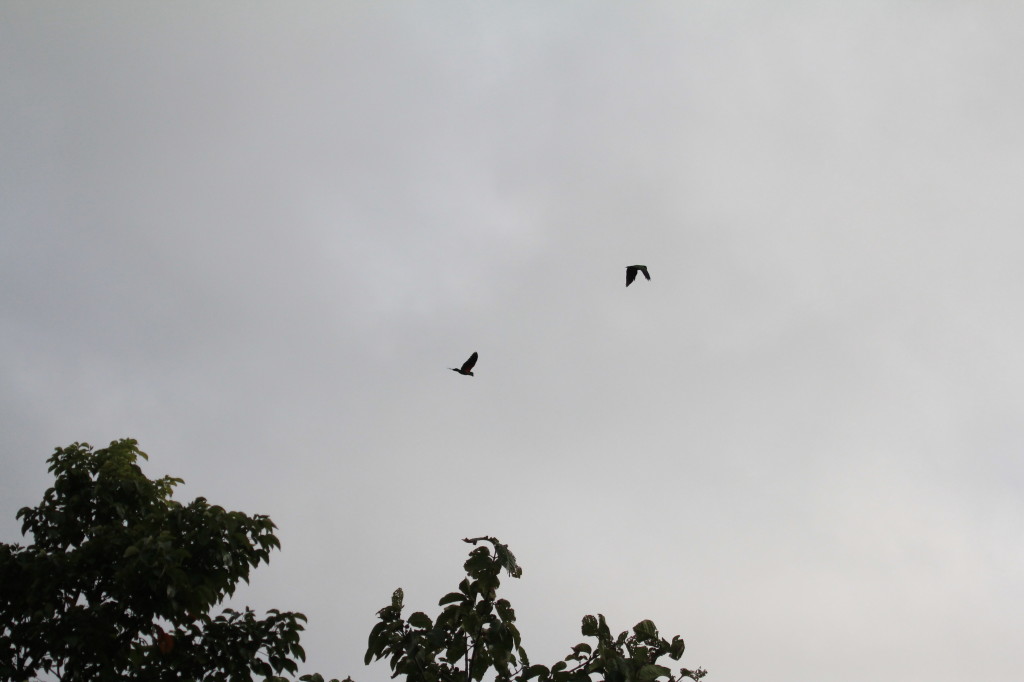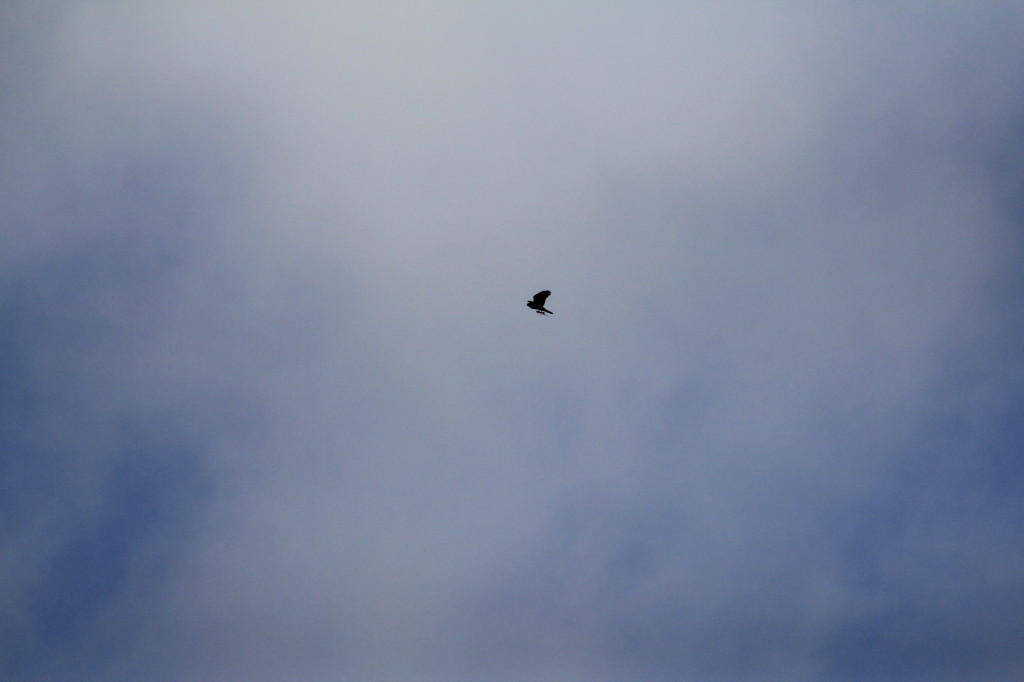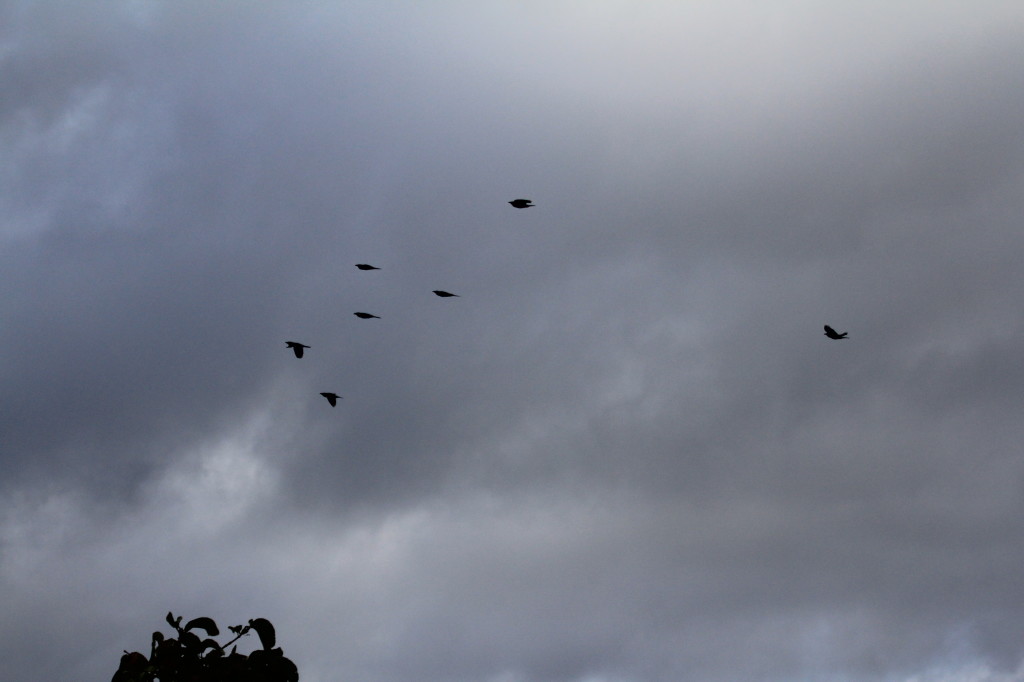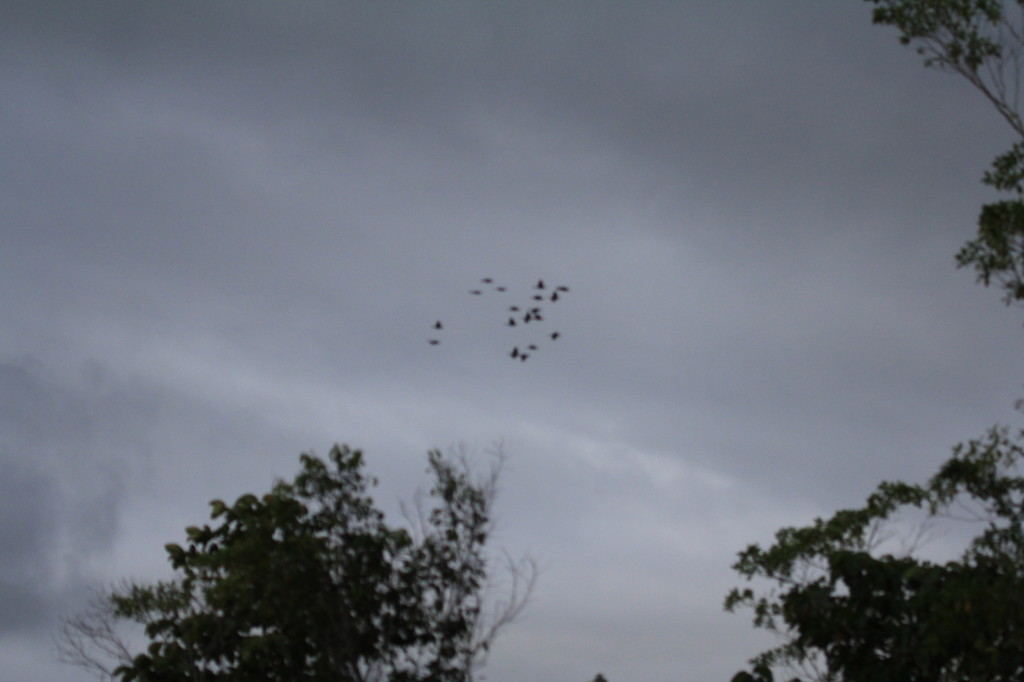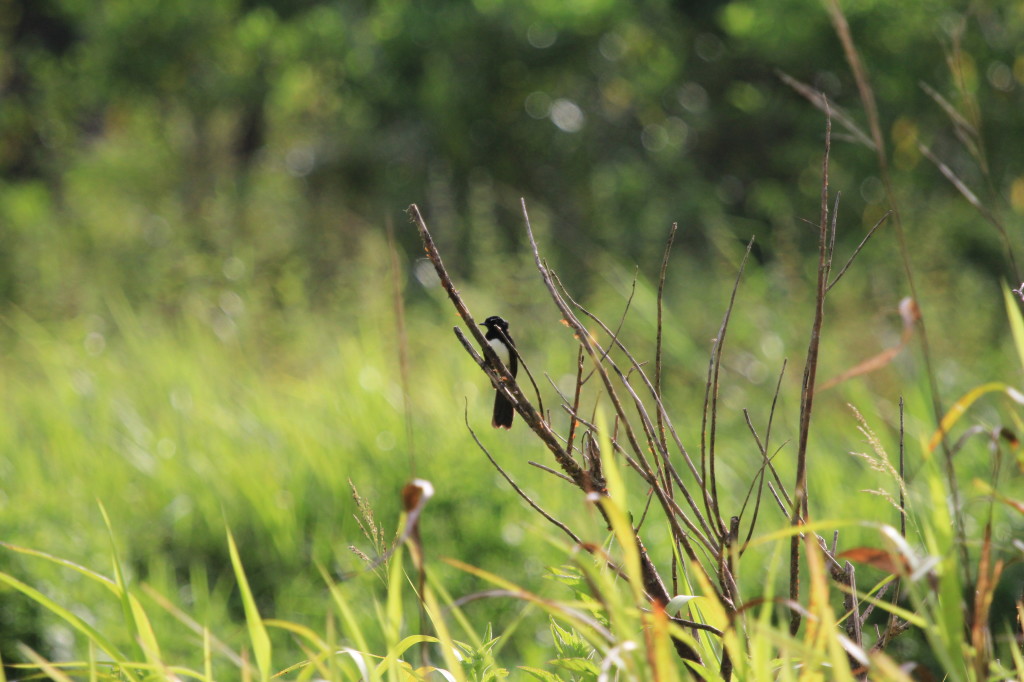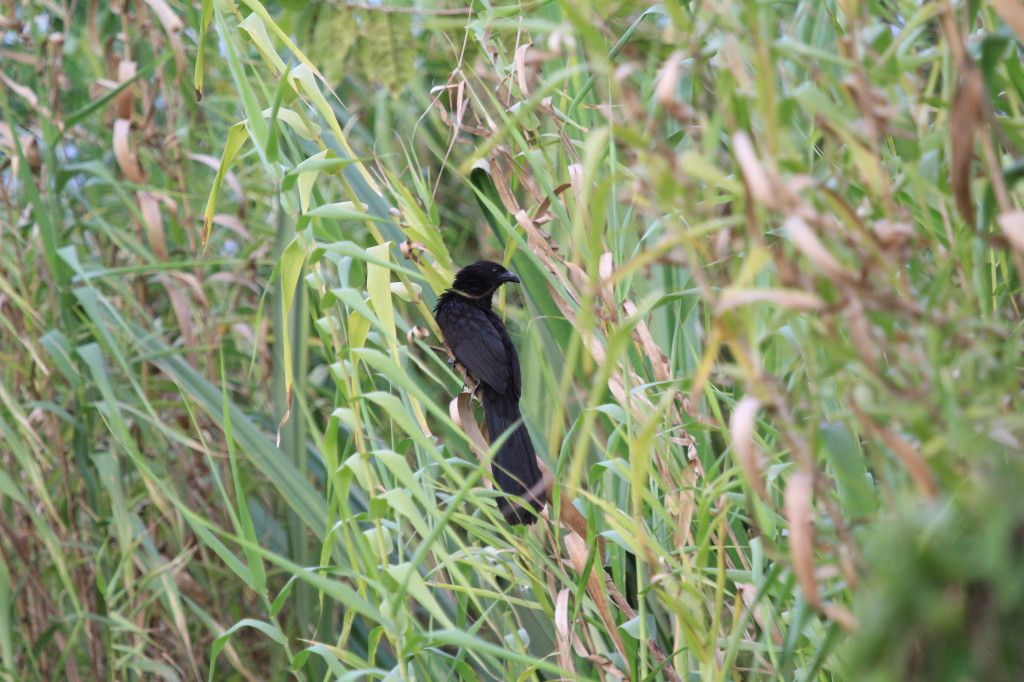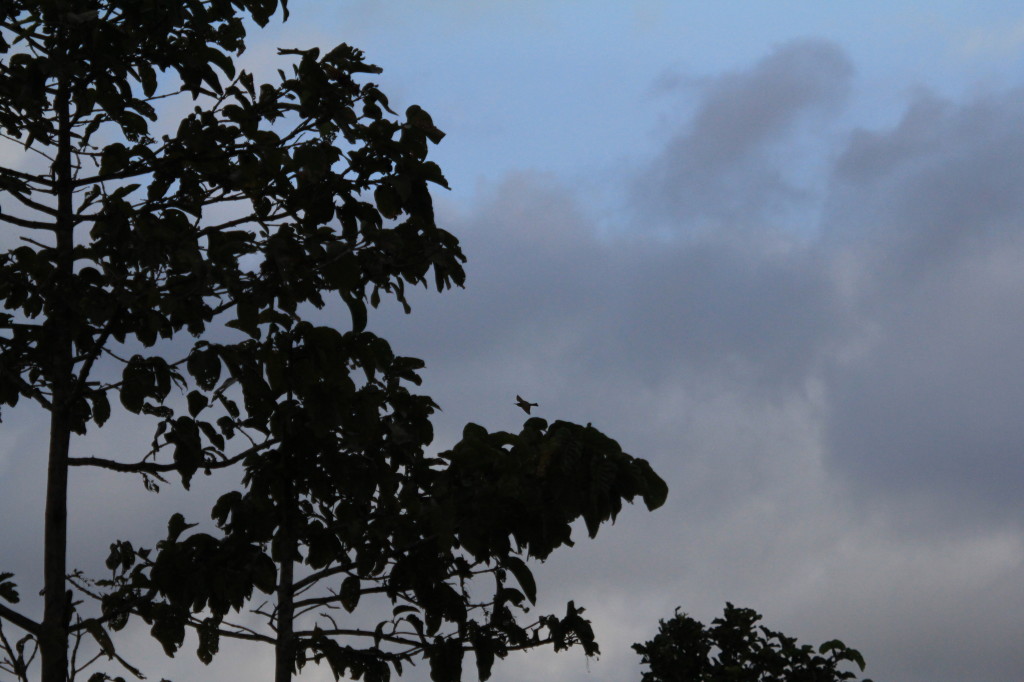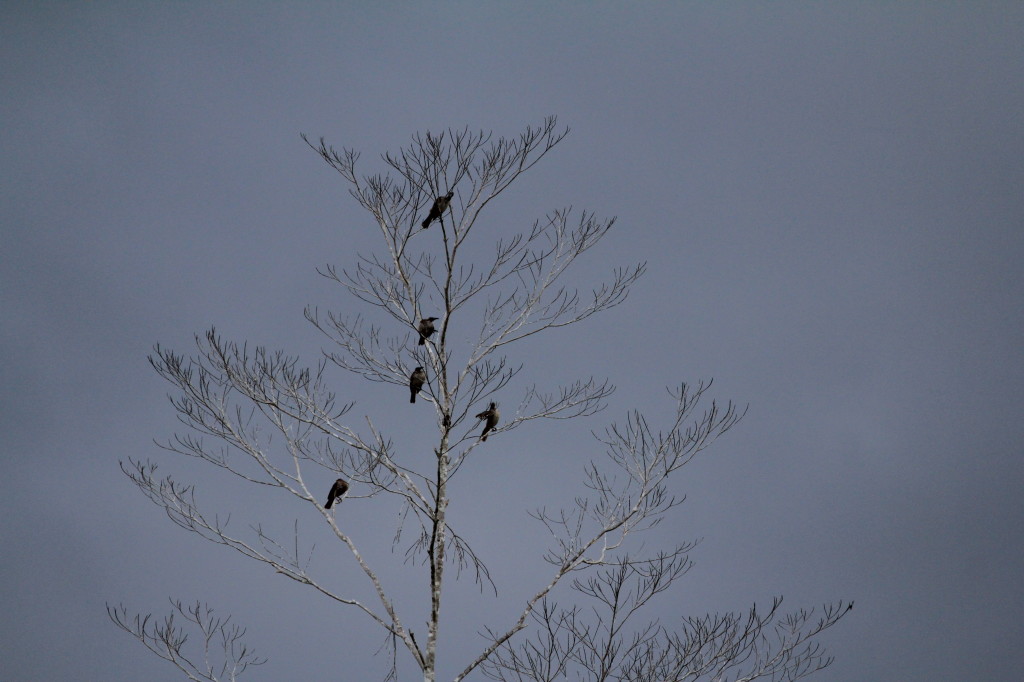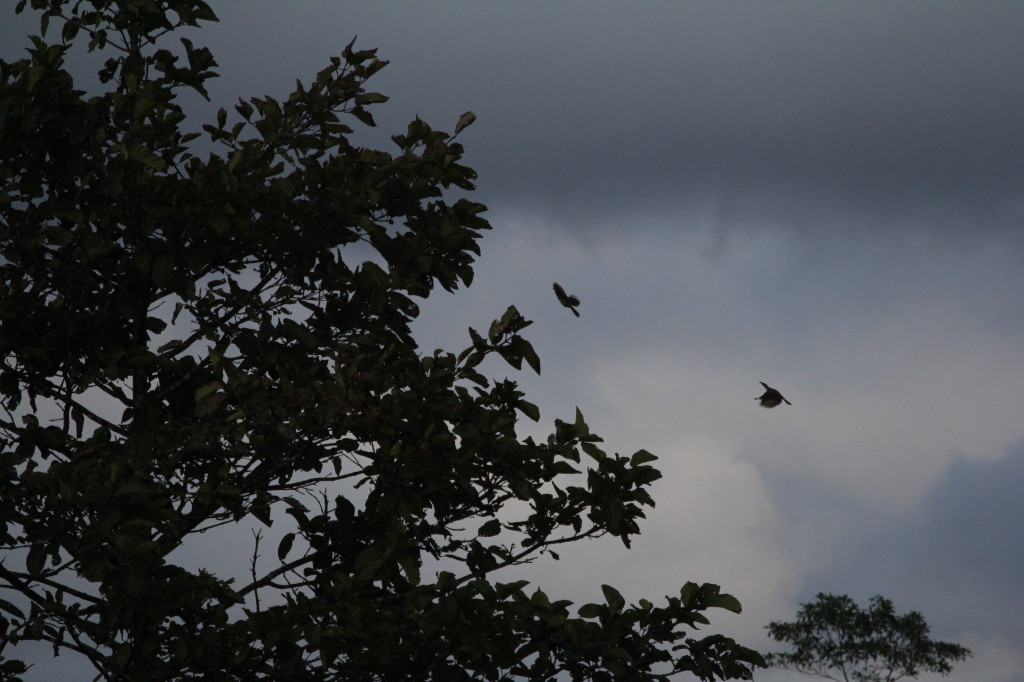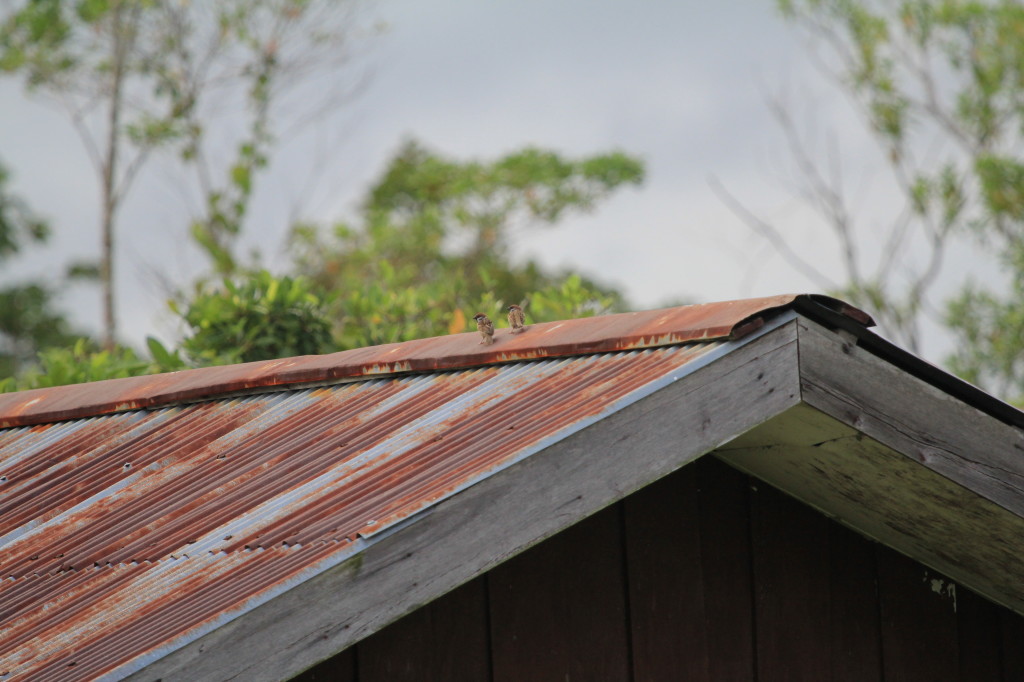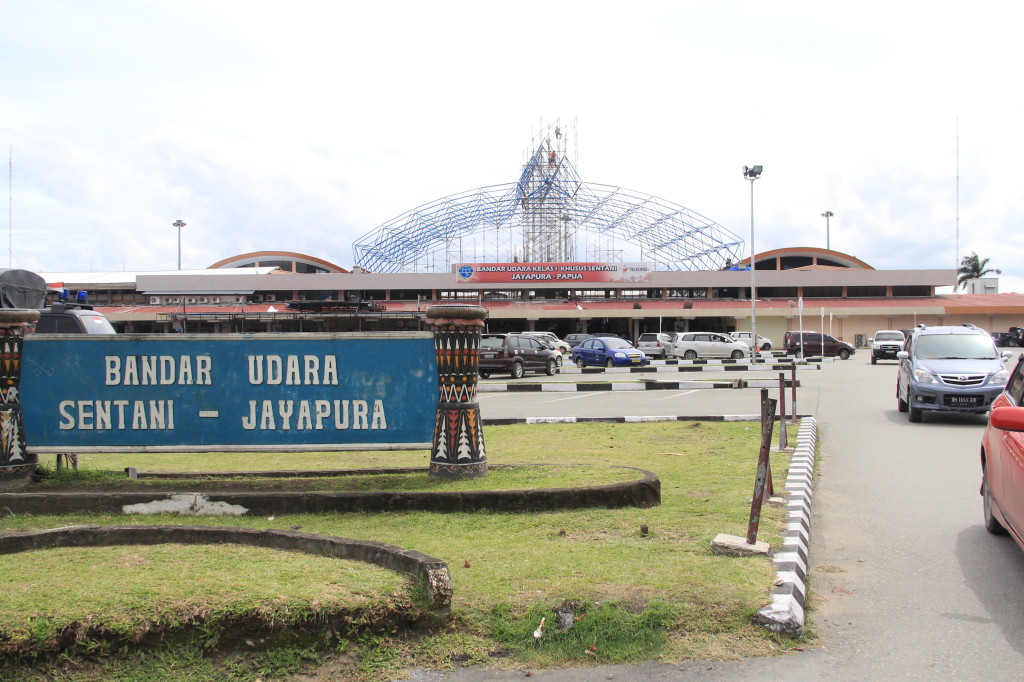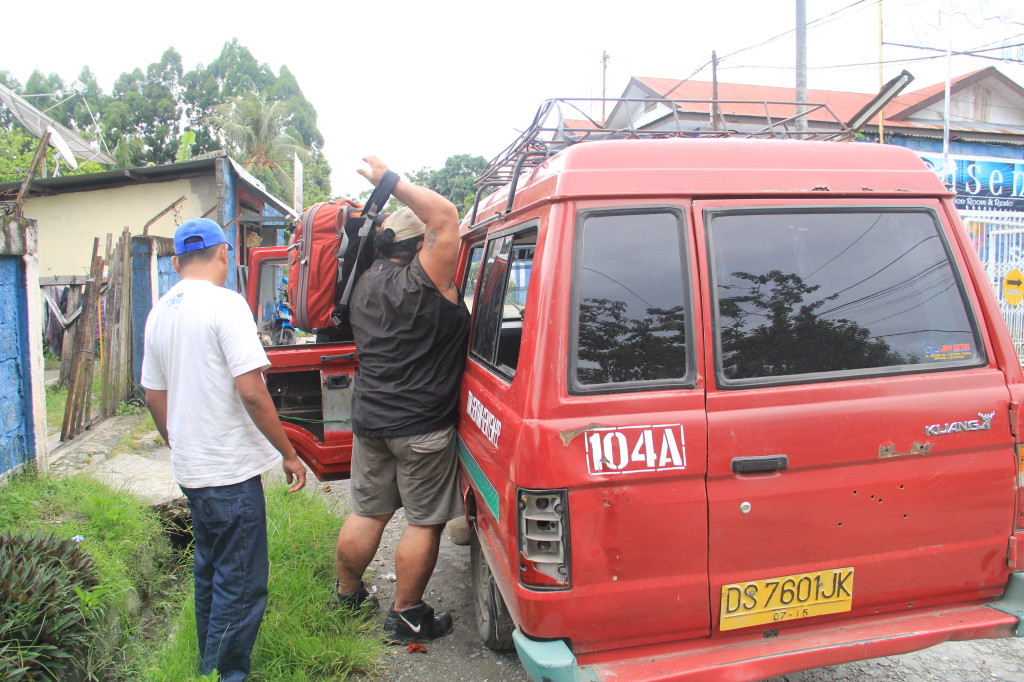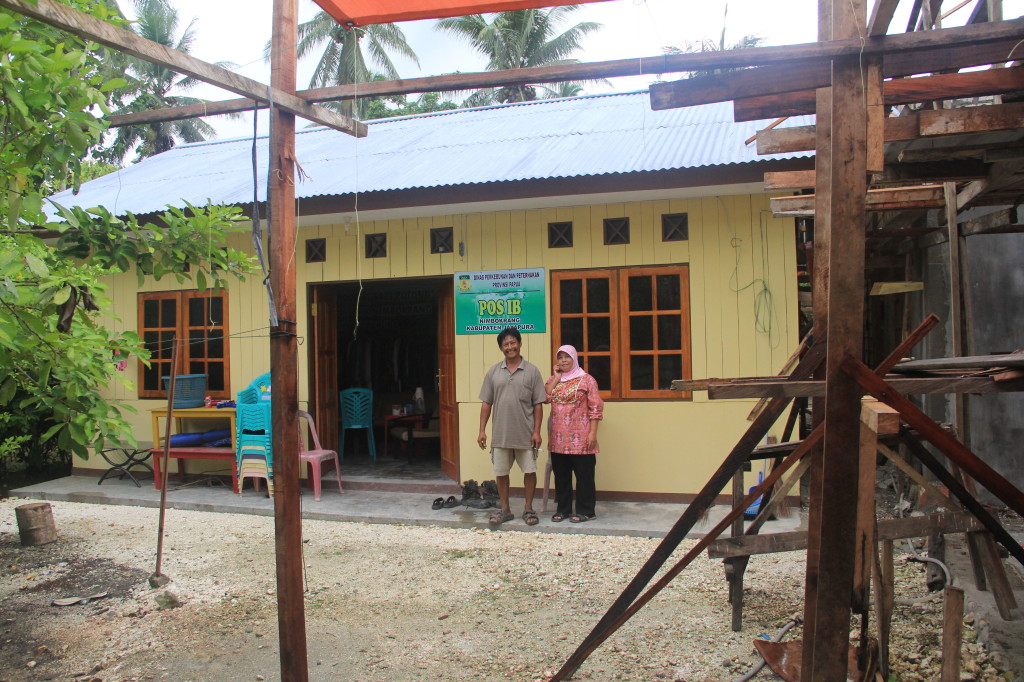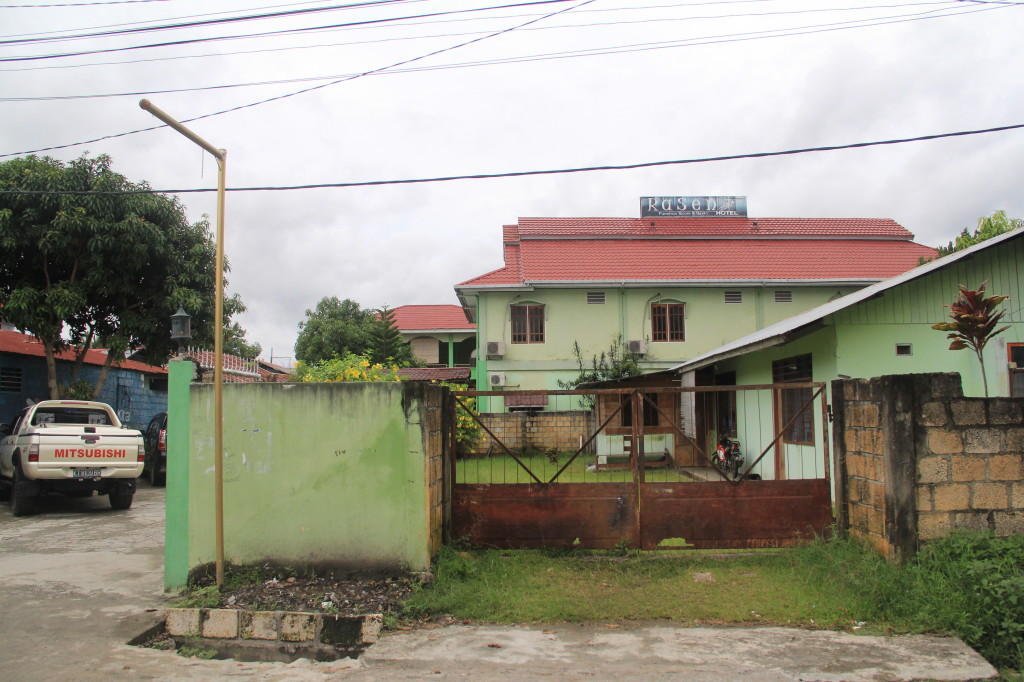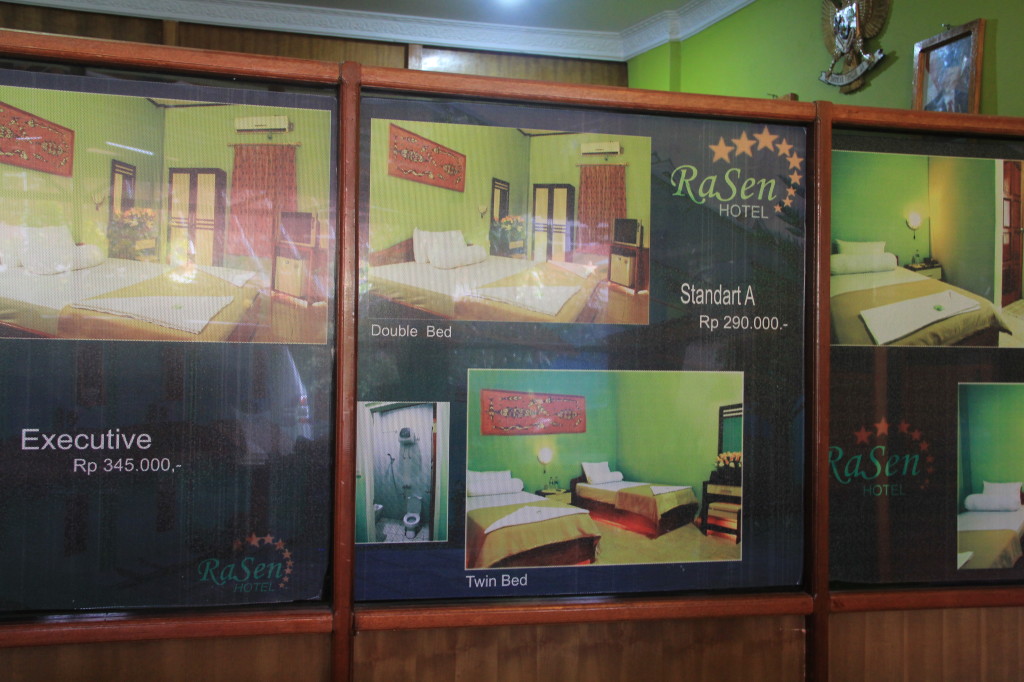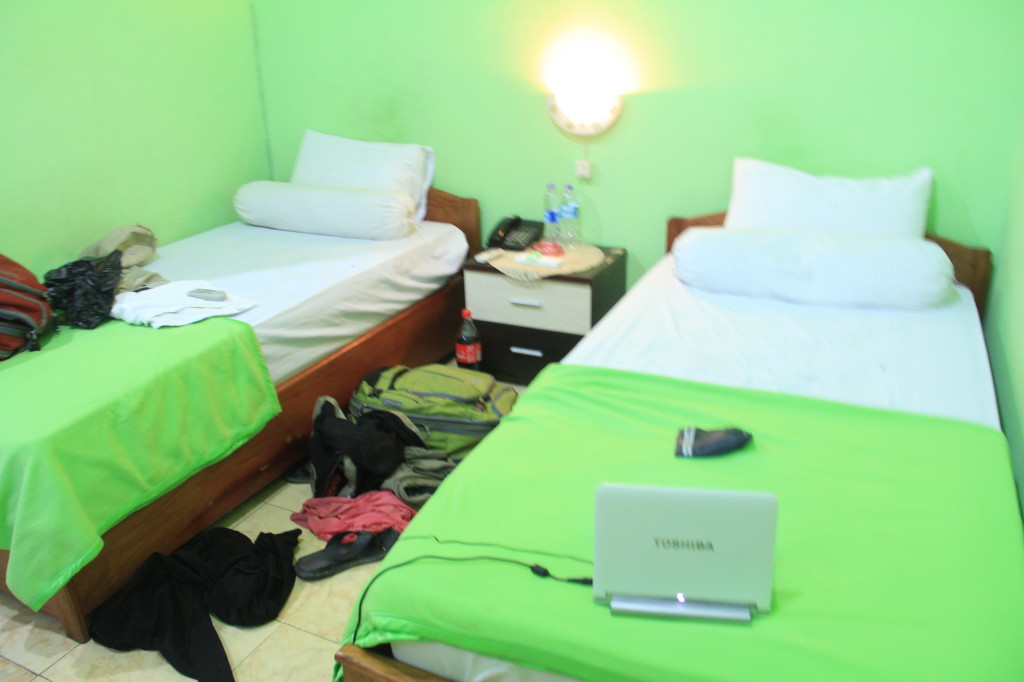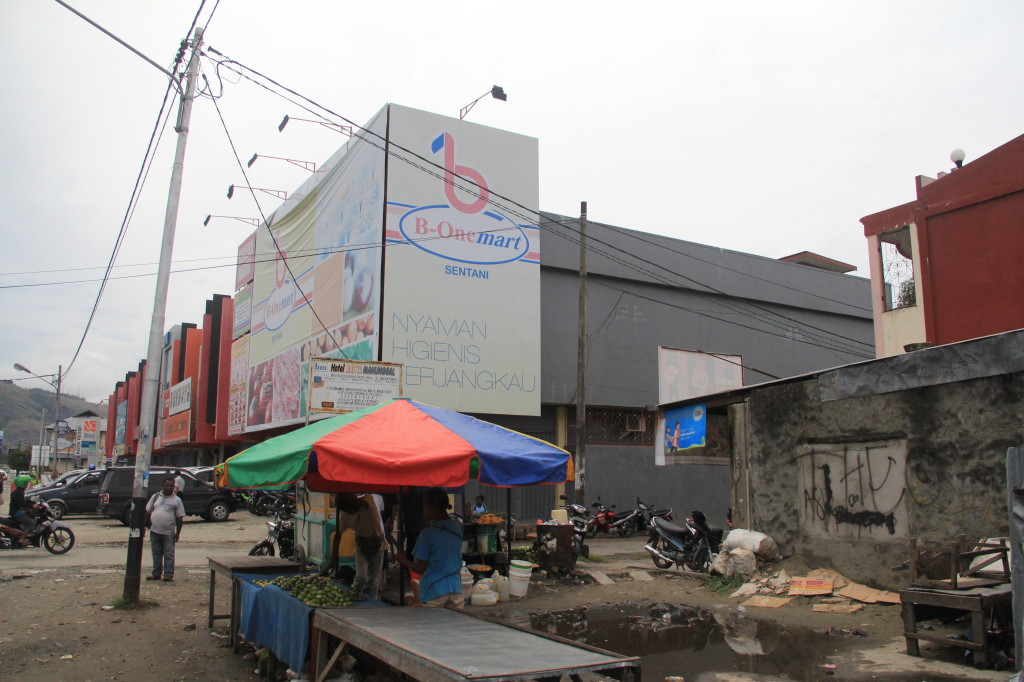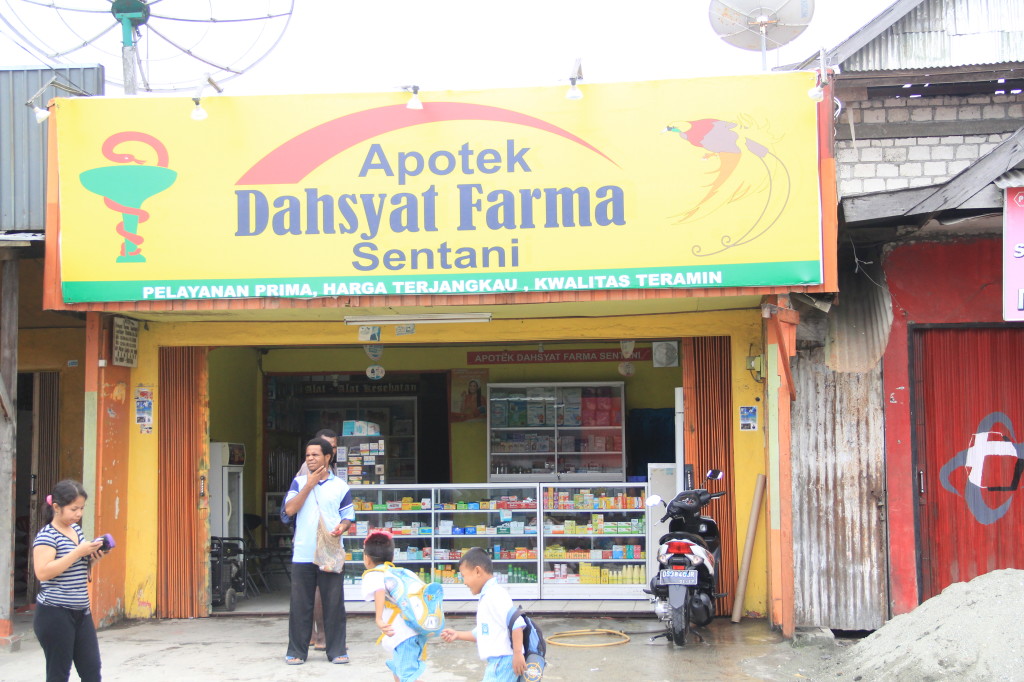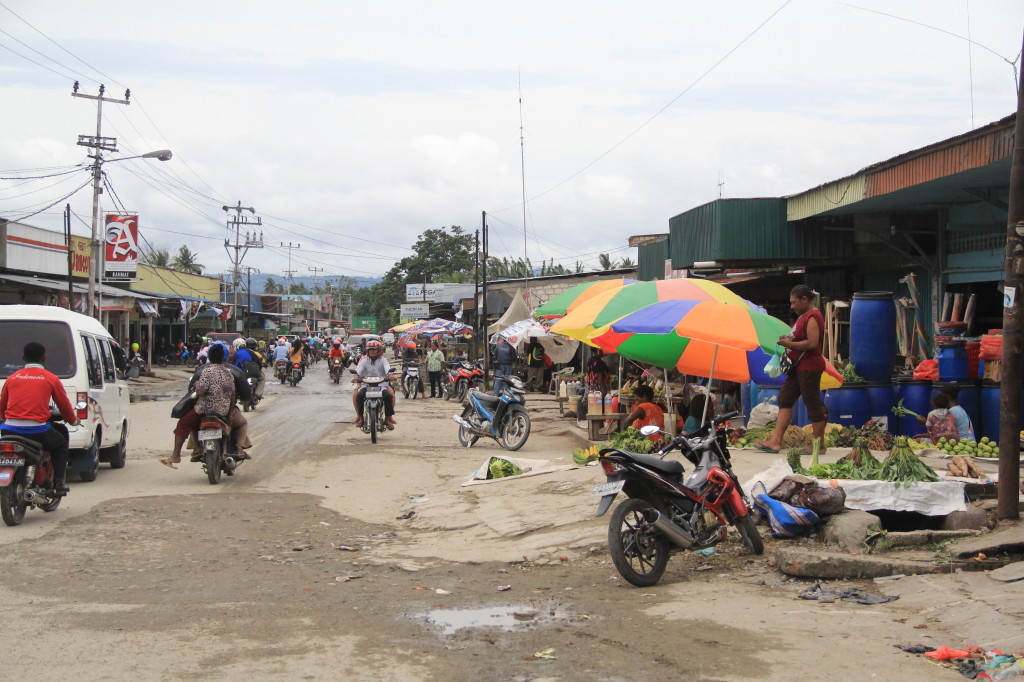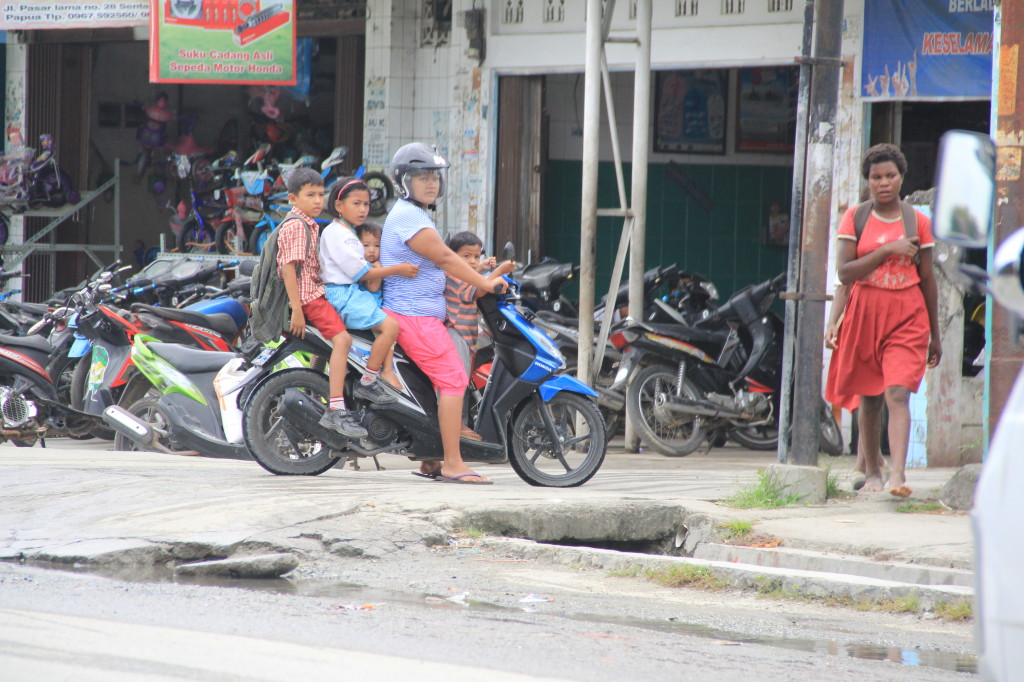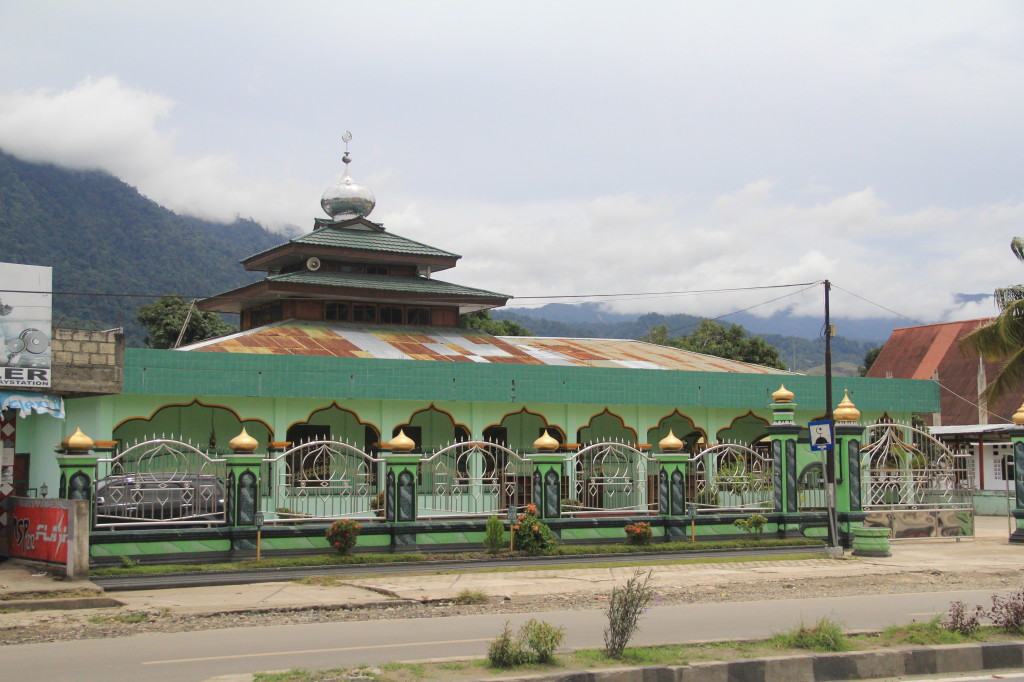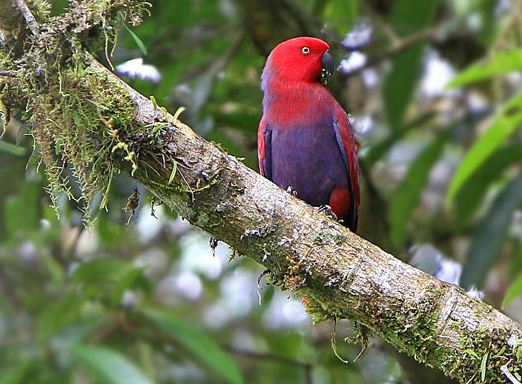After braving the planks in the swamp forest of Nimbokrang, I was ready for something less strenuous the next day. Fortunately Jamil knew just the place, a small mountain about 40 minutes from town by motorcycle (100,000 rupiahs extra). It was only me this time, my husband wanted to look around town. We set out at the crack of dawn and made it up the mountain in time to watch the sunrise.
(Don’t expect Nat Geo style professional photos, the birds were usually far away, in flight and many shots are blurry. I have not edited them since this is a travel blog and I want you to see the exact conditions you will be taking photos in when you go there).
The birds didn’t take long to show up. Although I still had to view them from a distance (attempting to get photos) at least they did fly through open skies a bit more as opposed to dense foliage in trees. Jamil identified several Brown Lories, Eclectus Parrots, Red-Cheeked Parrots and a solitary Rainbow Lorikeet which I thought was strange as I am used to seeing them in large flocks in Brisbane. I did have a go at “find the hidden bird” shots, pointing the camera at trees where birds were flitting about, hoping to catch them. Sometimes I got lucky, sometimes I didn’t! Brahminy Kites were easier to photograph as they are larger and fly slower. The highlight of this excursion was a stunning Palm Cockatoo!
These next photos are of a pair of Double-eyed Fig Parrots who were perching in a tree on a property belonging to Jamil’s friend. It was a bit muddy and I didn’t trust myself to get close enough without slipping and scaring them off so I asked Jamil to get some shots for me and he did!
Another Brahminy Kite swooping lazily around.
These Victoria Crowned Pigeons sometimes come into Jamil’s backyard so that’s why I was lucky enough to get close-ups!
Jamil knew I was anxious to see Buff-faced Pygmy Parrots. They sometimes also visit his backyard but not today. In the afternoon, we staked out a nest hoping they would come back at roosting time but they didn’t.
The next morning, Jamil hopped on his bike and went looking for them.
He found a pair in a neighbor’s tree and took me down there. I could see them furtively darting about in the branches but they were so tiny I never did get a clear look………….and they are fast too! I watched them for a few minutes, then they took off into the distance. This is the mark of an excellent guide, Jamil took the time to make sure I saw the birds I wanted to see (Birds of Paradise and Parrots) and really cared that I was happy and got to see all the birds possible. We didn’t get ALL the targeted birds, there were no Pesquet’s Parrots or Salvadori Fig Parrots. He can’t conjure birds out of thin air (though sometimes it did seem like he could)! We devoted an afternoon and a morning just to the Buff-faced Pygmy Parrot whereas other birders may have had other priorities and he would have gone elsewhere.
According to Burung Nusuantara, these are the most sought-after birds for a Nimbokrang trip. The linked page also has links to trip reports by other birders that may be of interest.
Northern Cassowary; Pale-billed Sicklebill; Blue-and-Black Kingfisher; Brown Lory; Twelve-wired Bird-of-Paradise; Shovel-billed Kingfisher; Victoria Crowned Pigeon; King Bird-of-Paradise; Blue Jewel Babbler; Brown-necked Crow; Hook-billed Kingfisher; Vulturine Parrot; Papuan Hawk-owl; Lesser Bird-of-Paradise; Brown-collared Brush-turkey; Greater Black Coucal; Papuan Nightjar; Grey Crow; Black-sided Robin; Lowland Peltops; White-eared Catbird; Wompoo Fruit-Dove; Coroneted Fruit-Dove.
This brought an end to my birding adventure in Nimbokrang. Jamil called the bemo to pick us up and it was back to Sentani for an overnight stay since we had an early flight to Manokwari the next day.

